
The Coming Wave: Technology, Power, and the Twenty-First Century's Greatest Dilemma
by
Mustafa Suleyman
Published 4 Sep 2023
We are, down to the biological, the anatomical level, a product of them. Stonework and fire were proto-general-purpose technologies, meaning they were pervasive, in turn enabling new inventions, goods, and organizational behaviors. General-purpose technologies ripple out over societies, across geographies, and throughout history. They open the doors of invention wide, enabling scores of downstream tools and processes. They are often built on some kind of general-purpose principle, whether the power of steam to do work or the information theory behind a computer’s binary code. The irony of general-purpose technologies is that, before long, they become invisible and we take them for granted.
…
Welcome to the age of biomachines and biocomputers, where strands of DNA perform calculations and artificial cells are put to work. Where machines come alive. Welcome to the age of synthetic life. CHAPTER 6 THE WIDER WAVE Technological waves are bigger than just one or two general-purpose technologies. They are clusters of technologies arriving at around the same time, anchored by one or more general-purpose technologies but extending far beyond them. General-purpose technologies are accelerants. Invention sparks invention. Waves lay the ground for further scientific and technological experimentation, nudging open the doors of possibility. This in turn yields new tools and techniques, new areas of research—new domains of technology itself.
…
See Timothy F. Bresnahan and Manuel Trajtenberg, “General Purpose Technologies ‘Engines of Growth’?,” (working paper, NBER, Aug. 1992), www.nber.org/papers/w4148. GO TO NOTE REFERENCE IN TEXT It had a pronounced impact on evolution Richard Wrangham, Catching Fire: How Cooking Made Us Human (London: Profile Books, 2010). GO TO NOTE REFERENCE IN TEXT General-purpose technologies ripple Account taken from Richard Lipsey, Kenneth Carlaw, and Clifford Bekar, Economic Transformations: General Purpose Technologies and Long-Term Economic Growth (Oxford: Oxford University Press, 2005).

Co-Intelligence: Living and Working With AI
by
Ethan Mollick
Published 2 Apr 2024
And sleep-deprived as I now am, I keep going back to my students’ questions: What does this technology mean for the future of work and education? Things are happening so quickly that it is hard to be sure, but we can begin to see its outlines. AI is what those of us who study technology call a General Purpose Technology (ironically, also abbreviated GPT). These advances are once-in-a-generation technologies, like steam power or the internet, that touch every industry and every aspect of life. And, in some ways, generative AI might even be bigger. General Purpose Technologies typically have slow adoption, as they require many other technologies to work well. The internet is a great example. While it was born as ARPANET in the late 1960s, it took nearly three decades to achieve general use in the 1990s, with the invention of the web browser, the development of affordable computers, and the growing infrastructure to support high-speed internet.
…
Finally, as great as previous General Purpose Technologies were, their impact on work and education may actually be less than the impact of AI. Where previous technological revolutions often targeted more mechanical and repetitive work, AI works, in many ways, as a co-intelligence. It augments, or potentially replaces, human thinking to dramatic results. Early studies of the effects of AI have found it can often lead to a 20 to 80 percent improvement in productivity across a wide variety of job types, from coding to marketing. By contrast, when steam power, that most fundamental of General Purpose Technologies, the one that created the Industrial Revolution, was put into a factory, it improved productivity by 18 to 22 percent.
…
While it was born as ARPANET in the late 1960s, it took nearly three decades to achieve general use in the 1990s, with the invention of the web browser, the development of affordable computers, and the growing infrastructure to support high-speed internet. It was fifty years before smartphones enabled the rise of social media. And many companies have not even fully embraced the internet: making a business “digital” is still a hot topic of discussion at business school, especially as many banks still use mainframe computers. And previous General Purpose Technologies have similarly taken many decades from development until they were useful. Consider computers, another transformative technology. Early computers improved quickly, thanks to Moore’s Law, the long-standing trend that the capability of computers doubles every two years. But it still took decades for computers to start appearing at businesses and schools because, even with their fast rate of increasing ability, they were starting from a very primitive beginning.
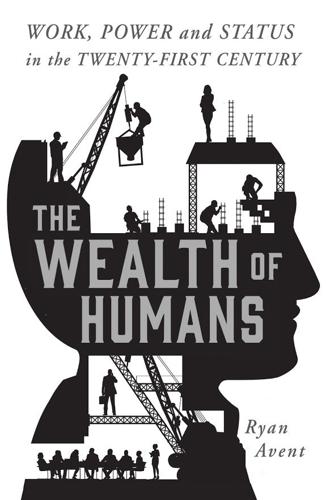
The Wealth of Humans: Work, Power, and Status in the Twenty-First Century
by
Ryan Avent
Published 20 Sep 2016
A half-century later, American manufacturers used more than 10 million horsepower in operating their factories, the vast majority of which was generated by steam engines, and the American economy was overtaking Britain as the world’s leading industrial and technological power.6 Economic historians label things such as steam power as a ‘general purpose technology’: an advance that can be used to do things more effectively across many different facets of life. A steam engine could be hooked up to any production facility that previously relied on wind or water or animal power. It could be affixed to transport devices – boats, cars, train engines – to make them go farther, faster, with more horsepower. Steam could be used to boost productivity in all sorts of contexts and industries. It is the general-purpose technologies – such as steam and electricity – that generate economic revolutions.
…
I’ll then zero in on the ways in which the abundance of labour is altering the operation of our economy – our cities, our financial markets and our trading patterns – in worrying ways. I’ll conclude with thoughts about how we are likely to try to manage the change, and where we can expect to have most and least success. 1 The Digital Revolution and the Abundance of Labour 1 The General-Purpose Technology Technological progress used to be something you could feel in your bones. It was the thing that was all around you, turning your world on its head. It was the sensation a young man might have felt when the arrival of mechanical harvesters made his labour on a farm in the countryside unnecessary, leading him to leave for the city, where giant steel-framed towers stretched upwards in what must have seemed like the very realization of the Tower of Babel, and where a rich man might occasionally zoom by in a wheeled vehicle that, astonishingly, powered itself along without the aid of horses.
…
It is the general-purpose technologies – such as steam and electricity – that generate economic revolutions. And computing is a fantastically powerful general-purpose technology. Engineers tinkered with computing machines for millennia, but the pace of advance in mechanical computing truly picked up in the nineteenth century. Early computing innovation found its way into a loom invented by a Frenchman called Joseph Marie Jacquard, which used punch cards to ‘programme’ the loom to produce particular patterns in the fabric. In the early twentieth century, the vacuum tube (a light-bulb-like device in which an electrical current is transmitted from one electrode to another) became the guts of early electronic computers.
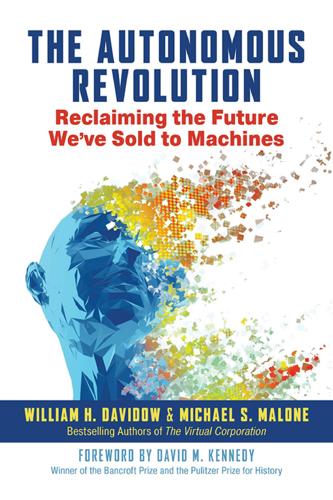
The Autonomous Revolution: Reclaiming the Future We’ve Sold to Machines
by
William Davidow
and
Michael Malone
Published 18 Feb 2020
While the Protestant Reformation sprang from the minds of men such as Martin Luther and John Calvin, it was catalyzed by the generalized use of printing, which made it possible for vernacular Bibles and tracts to be widely disseminated. The current rise of populism is a reaction to the technology-enabled substitutional equivalences that are driving the Autonomous Revolution. Still, the main focus of this book is on transformations that are driven by the rise of general-purpose technologies. In our definition, general-purpose technologies are ones that have broad effects on the economic and institutional structures of society. Among history’s most important are agriculture, writing and numbers, printing, electricity, mechanical power, and many forms of information technology. A significant lag often occurs between the introduction of a technology and the changes associated with it.
…
Despite this difference, techno-optimists (including many economists) have argued that the ultimate impact of intelligent machines will be similar to those of past general-purpose technologies. We believe, however, that things will be different this time. The structural transformations unleashed by intelligent machines are already rendering many of the economic rules and social processes of the past obsolete. We will have to search for, and put into place, new rules to deal with the future. To understand what’s different, let’s take a closer look at two general-purpose technologies: the internal combustion engine and the semiconductor. As we all know, the impact of the internal combustion engine was particularly dramatic.
…
Until 1500 CE, this described only about 10 percent of the world’s population.17 This is very much not the case today. TRUE PHASE CHANGE The period between ancient times and the Renaissance was more heavily influenced by idea- and belief-driven structural transformations than by general-purpose technologies. This is not to say that many important inventions weren’t developed during those years, but only to note that their effects did not create social phase changes. New forms did not emerge; the old rules continued to work pretty well. The future was nowhere near as discontinuous as it had been in the earlier epochs of the Agricultural Revolution, or as it is today.

Exponential: How Accelerating Technology Is Leaving Us Behind and What to Do About It
by
Azeem Azhar
Published 6 Sep 2021
Farmers, firemen and financiers might all have cause to call on a wheel. And a wheel could be used in every part of their trade. These wide-ranging inventions are known as ‘general purpose technologies’. They may displace other technologies and create the opportunity for a wide variety of complementary products – products and services that can only exist because of this one invention. Throughout history, general purpose technologies (GPTs) have transformed society beyond recognition. Electricity drastically altered the way factories work, and revolutionised our domestic lives. The printing press, which played a key role in the European Reformation and the scientific revolution, was much more than a set of pressure plates and cast metal type.
…
And what can we all do, as policymakers, business leaders or citizens, to prevent the exponential gap eroding our societies? The structure of this book tries to make my answers as clear as possible. In the first part, I will explain what exponential technologies are and why they have come about. I argue that our age is defined by the emergence of several new ‘general purpose technologies’, each improving at an exponential rate. It’s a story that starts with computing – but also encompasses energy, biology and manufacturing. The breadth of this change means that we have entered a wholly new era of human society and economic organisation – what I call the ‘Exponential Age’.
…
Gene engineering might be used to tamper with microorganisms, produce new screens for smartphones, or help us design precise medicines. And 3D printers let us create everything from precision car parts to new bodily organs. The rapid evolution of these technologies does not presage instantaneous change. The revolutionary effect of general purpose technologies may take time to materialise. Consider electricity. In the words of the leading economic historian James Bessen: ‘The first electrical generating stations opened in 1881, but electrification had little effect on economic productivity until the 1920s.’20 GPTs take a while to have meaningful effects – as new infrastructure is built, ways of working change, and companies train their employees in novel techniques.

Cryptoassets: The Innovative Investor's Guide to Bitcoin and Beyond: The Innovative Investor's Guide to Bitcoin and Beyond
by
Chris Burniske
and
Jack Tatar
Published 19 Oct 2017
For example, instead of aiming to decentralize and democratize aspects of the existing financial services, Masters’s Digital Asset Holdings aims to assist existing financial services companies in adopting this new technology, thereby helping the incumbents fight back the rebels who seek to disrupt the status quo. BLOCKCHAINS AS A GENERAL PURPOSE TECHNOLOGY While we have our beliefs about the most exciting applications of blockchain technology, we don’t ascribe to an exclusive world view. Instead, we believe Bitcoin’s blockchain is one of the most important blockchains in existence, and that it has given birth to a new general purpose technology that goes beyond Bitcoin. General purpose technologies are pervasive, eventually affecting all consumers and companies. They improve over time in line with the deflationary progression of technology, and most important, they are a platform upon which future innovations are built.
…
Disruptive technologies are also being invented at an accelerating rate. The trend is one we have been witnessing for millennia. For example, between AD 900 and 1900, a new general purpose technology was invented roughly every 100 years, with notable examples including the steam engine, automobile, and electricity. In the twentieth century, a new general purpose technology came into existence every 15 years, with familiar examples like computers, the Internet, and biotechnology. In the twenty-first century, general purpose technologies have come into existence every 4 years, with autonomous robotics and blockchain technology as two of the more recent examples.3 While disruptive technologies tend to unseat incumbents, there are examples of companies that have managed to reinvent themselves continually for decades.
…
In January 2009, when Bitcoin was first released, it embodied the first working implementation of a blockchain the world had seen. Since then, people have downloaded the open-source software that is Bitcoin, studied its blockchain, and released different blockchains that go far beyond Bitcoin. Blockchain technology can now be thought of as a general purpose technology, on par with that of the steam engine, electricity, and machine learning. To quote a May 2016 article in Harvard Business Review by Don and Alex Tapscott: “The technology most likely to change the next decade of business is not the social web, big data, the cloud, robotics, or even artificial intelligence.
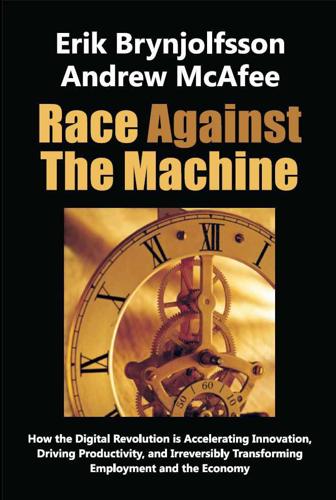
Race Against the Machine: How the Digital Revolution Is Accelerating Innovation, Driving Productivity, and Irreversibly Transforming Employment and the Economy
by
Erik Brynjolfsson
Published 23 Jan 2012
champion supercomputer, and high-quality instantaneous machine translation, then, can be seen as the first examples of the kinds of digital innovations we’ll see as we move further into the second half—into the phase where exponential growth yields jaw-dropping results. Computing the Economy: The Economic Power of General Purpose Technologies These results will be felt across virtually every task, job, and industry. Such versatility is a key feature of general purpose technologies (GPTs), a term economists assign to a small group of technological innovations so powerful that they interrupt and accelerate the normal march of economic progress. Steam power, electricity, and the internal combustion engine are examples of previous GPTs.
…
This means unemployment due to our discovery of means of economising the use of labour outrunning the pace at which we can find new uses for labour. —John Maynard Keynes, 1930 The individual technologies and the broader technological acceleration discussed in Chapter 2 are creating enormous value. There is no question that they increase productivity, and thus our collective wealth. But at the same time, the computer, like all general purpose technologies, requires parallel innovation in business models, organizational processes structures, institutions, and skills. These intangible assets, comprising both organizational and human capital, are often ignored on companies’ balance sheets and in the official GDP statistics, but they are no less essential than hardware and software.
…
As they increase government transparency and accountability and give us new ways to assemble and make our voices heard, they benefit us as citizens. And as they put us in touch with ideas, knowledge, friends, and loved ones, they benefit us as human beings. So as we observe the opening up of the digital frontier, we are hugely optimistic. History has witnessed three industrial revolutions, each associated with a general purpose technology. The first, powered by steam, changed the world so much that according to historian Ian Morris, it “made mockery of all that had gone before.” It allowed huge and unprecedented increases in population, social development, and standards of living. The second, based on electricity, allowed these beneficial trends to continue and led to a sharp acceleration of productivity in the 20th century.

The Second Machine Age: Work, Progress, and Prosperity in a Time of Brilliant Technologies
by
Erik Brynjolfsson
and
Andrew McAfee
Published 20 Jan 2014
All of these problems have a single, little noticed root cause: We have been living off low-hanging fruit for at least three hundred years. . . . Yet during the last forty years, that low-hanging fruit started disappearing, and we started pretending it was still there. We have failed to recognize that we are at a technological plateau and the trees are more bare than we would like to think.6 General Purpose Technologies: The Ones That Really Matter Clearly, Gordon and Cowen see the invention of powerful technologies as central to economic progress. Indeed, there’s broad agreement among economic historians that some technologies are significant enough to accelerate the normal march of economic progress.
…
Electricity gave a further boost to manufacturing by enabling individually powered machines. It also lit factories, office buildings, and warehouses and led to further innovations like air conditioning, which made previously sweltering workplaces pleasant. With their typical verbal flair, economists call innovations like steam power and electricity general purpose technologies (GPTs). Economic historian Gavin Wright offers a concise definition: “deep new ideas or techniques that have the potential for important impacts on many sectors of the economy.”7 “Impacts” here mean significant boosts to output due to large productivity gains. GPTs are important because they are economically significant—they interrupt and accelerate the normal march of economic progress.
…
Are we alone in thinking that information and communication technology (ICT) belongs in the same category as steam and electricity? Are we the only ones who think, in short, that ICT is a GPT? Absolutely not. Most economic historians concur with the assessment that ICT meets all of the criteria given above, and so should join the club of general purpose technologies. In fact, in a list of all the candidates for this classification compiled by the economist Alexander Field, only steam power got more votes than ICT, which was tied with electricity as the second most commonly accepted GPT.9 If we are all in agreement, then why the debate over whether ICTs are ushering in a new golden age of innovation and growth?

Power and Progress: Our Thousand-Year Struggle Over Technology and Prosperity
by
Daron Acemoglu
and
Simon Johnson
Published 15 May 2023
If everybody becomes convinced that artificial-intelligence technologies are needed, then businesses will invest in artificial intelligence, even when there are alternative ways of organizing production that could be more beneficial. Similarly, if most researchers are working on a particular way of advancing machine intelligence, others may follow faithfully, or even blindly, in their footsteps. These issues become even more consequential when we are dealing with “general-purpose” technologies, such as electricity or computers. General-purpose technologies provide a platform on which myriad applications can be built and potentially generate benefits—but sometimes also costs—for many sectors and groups of people. These platforms also allow widely different trajectories of development. Electricity, for instance, was not just a cheaper source of energy; it also paved the way to new products, such as radios, household appliances, movies, and TVs.
…
DOI:10.3386/w29772. Heldring, Leander, James Robinson, and Sebastian Vollmer. 2021b. “The Long-Run Impact of the Dissolution of the English Monasteries.” Quarterly Journal of Economics 136, no. 4: 2093‒2145. Helpman, Elhanan, and Manuel Trajtenberg. 1998. “Diffusion of General-Purpose Technologies.” In General-Purpose Technologies and Economic Growth, edited by Helpman, 85‒120. Cambridge, MA: MIT Press. Henrich, Joseph. 2016. The Secret of Our Success: How Culture Is Driving Human Evolution, Domesticating Our Species, and Making Us Smarter. Princeton, NJ: Princeton University Press. Hesser, Leon. 2019.
…
Advances in manufacturing based on electricity increased demand for raw materials and other industrial inputs, such as chemicals and fossil fuels, as well as retail and transport services. They also launched novel products, including new plastics, dyes, metals, and vehicles, that were then used in other industries. Electricity has also paved the way for much greater levels of pollution from manufacturing production. Although general-purpose technologies can be developed in many different ways, once a shared vision locks in a specific direction, it becomes difficult for people to break out of its hold and explore different trajectories that might be socially more beneficial. Most people affected by those decisions are not consulted. This creates a natural tendency for the direction of progress to be socially biased—in favor of powerful decision makers with dominant visions and against those without a voice.

Human Frontiers: The Future of Big Ideas in an Age of Small Thinking
by
Michael Bhaskar
Published 2 Nov 2021
The history of writing is one of static methods and technology, stable for hundreds of years, spliced with moments – like the invention of paper, the codex or the printing press – of massive change. Inventions are species of human creation. Joel Mokyr divides them into what he calls macro-inventions and microinventions.17 The former are pathbreaking general purpose technologies whose impact is felt across sectors. They are enablers of further swathes of invention, wholesale productivity boosters. Meanwhile micro-inventions centre on everyday product improvements. They are cumulative, local, small scale and occupy the vast majority of what counts as invention, but nonetheless sometimes concatenations of the latter lead to the former.
…
In parallel the price fell from $16 a barrel to just a dollar.11 The two technologies had a host of knock-on effects: buildings could be taller, and transport more efficient and powerful. Macro-inventions came fast. New chemicals from dyes to dynamite, aspirin to fertiliser were harnessed and mass produced. Electricity generation and the electricity network, a general purpose technology surely as significant as any in history, came of age; then advances were made in the manufacturing process itself, a total system exemplified by Fordism with its interchangeable parts and production line. Changes in food supply from the use of nitrates to refrigeration improved quality and length of life; and a revolution in communications media introduced a now familiar informational mix.
…
In the nineteenth century a new agricultural technique or manufacturing technology could have a dramatic impact on an entire national economy. But today even the largest sectors and industries form just a small portion of the whole. Commensurately huge advances in, say, metallurgy, just don't have the same impact, and the sprawl and complexity of the economy means even the impact of general purpose technologies is diluted. As Anton Howes puts it: Innovation has, in a sense, been the victim of its own success. By creating ever more products, sprouting new industries, and diversifying them into myriad specialisms, we have shrunk the impact that any single improvement can have. When cotton was king, a handful of inventors might hope to affect the entire national textile industry in some way.

The Technology Trap: Capital, Labor, and Power in the Age of Automation
by
Carl Benedikt Frey
Published 17 Jun 2019
As Marx writes, with the steam engine a prime mover finally arrived, “whose power was entirely under man’s control, that was mobile and a means of locomotion, that was urban and not, like the water-wheels, rural, that permitted production to be concentrated in towns instead of, like the water-wheels, being scattered up and down the country.”20 But perhaps more importantly, its application was not confined to any single task or industry: unlike water power, it could be applied in land transportation as well. Like the computer and electricity, the steam engine was an example of what economists call a general purpose technology. In contrast to other significant technologies of the eighteenth century, which were pure engineering efforts, steam power was a spin-off of the scientific revolution, building on the discovery that the atmosphere has weight. With the steam engine, science first took center stage in technological development, and its importance only continued to grow.
…
The available data suggest that a total of 2,400–2,500 steam engines were built in the eighteenth century.23 And the impact of steam on the overall economy was still very slight as late as 1830, as the economic historian Nicholas Crafts has shown.24 Though its productivity contribution accelerated thereafter, especially in the period 1850–70, the economic impacts of steam were modest relative to those of later general purpose technologies like electricity and computers. Many sectors, including agriculture and construction, were left largely untouched. Nor did steam power enter people’s homes. Similar to the economic benefits of electricity and computers, however, the productivity effects of steam were delayed. One reason is that adoption was slow because water power remained cheaper for a long time.
…
It runs and warms our cars, it furnishes our light, it plates our metals, it runs our elevators, it electrocutes our criminals; and a thousand other things it performs for us with secrecy and dispatch in its silent and forceful way.3 Electricity and the internal combustion engine were the general purpose technologies of the century, not only affecting every aspect of industry but also transforming the lives of average citizens. One of the great coincidences in economic history is that Karl Benz’s successful trial of his gas engine on New Year’s Eve 1879 occurred just ten weeks after Thomas Edison’s invention of the electric light bulb.4 Thus, if the annus mirabilis of the Industrial Revolution was 1769, when Richard Arkwright and Watt both patented their defining inventions, 1879 can be seen as the symbolic beginning of the Second Industrial Revolution.

Them And Us: Politics, Greed And Inequality - Why We Need A Fair Society
by
Will Hutton
Published 30 Sep 2010
But the person above all who had most impact on this book was Philippe Schneider – continuing from where he left off on The Writing on the Wall. He researched every chapter. He commented on every draft, singling out rogue passages that required attention. He consecrated nearly two years of his life to the cause of a book that he and I hope might make a difference. He led me through the wilds of behavioural psychology, general purpose technologies and financial network theory. He worked indefatigably, sometimes late into the night, to find the key paper or text that would support the emerging narrative. And when I flagged he would be steadfastly there, patiently encouraging me to come up with another draft – never criticising as I missed deadline after deadline.
…
Capitalism may have its roots in the collective acquisition of knowledge – usually facilitated by public investment in learning, research and universities – but it is driven by individuals who are ready to dare, acting at the frontiers of business and technological possibility. The great general purpose technologies that have changed the world – such as the railway, the internal combustion engine and the internet – are transformations driven by this fecund interaction between capitalist dynamism and ever-expanding knowledge. The actors at the mobilising centre of this process are the entrepreneurs.
…
Robert Winston argues that this tool was the trigger that began human evolution: it enabled hunting, transformed diets and brain power, created communication and group skills – and set in train the iterative relationship that human beings have had with nature ever since.8 The flint hand axe was the first transformative technology. Innovation theorists identify so-called general-purpose technologies (GPTs) – generic technologies that through progressive improvement have had radical transformative impacts on entire economies and societies – as the principal drivers of wealth. If we take a very long view of human civilisation from its beginnings around 9000 BC to the middle of the fifteenth century AD, Homo sapiens gradually evolved from a system of hunter-gathering to agricultural communities settled in villages and towns.
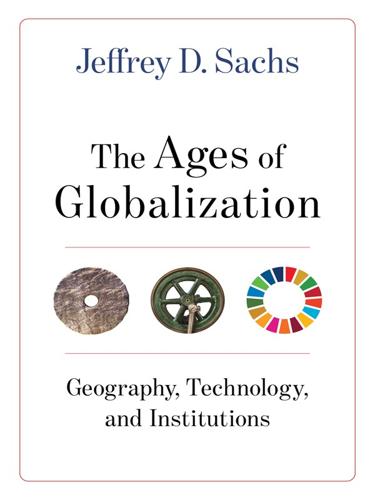
The Ages of Globalization
by
Jeffrey D. Sachs
Published 2 Jun 2020
Total energy consumption rose by 37 percent in the first half of the eighteenth century, by 124 percent in the second half of the century, and by 255 percent in the first half of the nineteenth century. Note the high use of coal already in 1700–1709, before the steam engine. Most of this coal was likely used for home heating and cooking. Table 7.2 Energy Consumption (petajoules) Watt’s steam engine had applications across the economy. It was, in modern parlance, a general-purpose technology (GPT)—the kind of technology that finds applications across many sectors of the economy.5 With the steam engine, equipment of all kinds could be mechanized. Major applications came quickly in textiles production, with the mechanization of spinning and weaving and the introduction of large-scale factory production using steam power.
…
Bourguignon, François and Christian Morrisson. “Inequality Among World Citizens: 1820–1992.” American Economic Review 92, no. 4 (2002): 727–44. Brauer, Ralph W. “The Camel and Its Role in Shaping Mideastern Nomad Societies.” Comparative Civilizations Review 28, no. 28 (1993): 47. Bresnahan, Timothy F., and Manuel Trajtenberg. “General Purpose Technologies ‘Engines of growth’?.” Journal of Econometrics 65, no. 1 (1995): 83–108. Broughton, Jack M. and Elic M. Weitzel, “Population Reconstructions for Humans and Megafauna Suggest Mixed Causes for North American Pleistocene Extinctions.” Nature Communications 9, no. 1 (2018): 5441. Browning, Sharon R., Brian L.
…
Annual Review of Psychology 68, no. 1 (2017): 155–86. https://doi.org/10.1146/annurev-psych-010416-044201. Harris, W. V. Roman Power: A Thousand Years of Empire. Cambridge: Cambridge University Press, 2016. Helliwell, John F., Richard Layard, and Jeffrey D. Sachs, eds. The UN World Happiness Report 2019. New York: Sustainable Development Solutions Network: 2019. Helpman, Elhanan, ed. General Purpose Technologies and Economic Growth. Cambridge, MA: MIT Press, 1998. Henn, B. M., L. L. Cavalli-Sforza, and M. W. Feldman. “The Great Human Expansion.” Proceedings of the National Academy of Sciences 109, no. 44 (2012): 17758–64. Hershkovitz, Israel, Gerhard W. Weber, Rolf Quam, Mathieu Duval, Rainer Grün, Leslie Kinsley, Avner Ayalon, et al.

The Green New Deal: Why the Fossil Fuel Civilization Will Collapse by 2028, and the Bold Economic Plan to Save Life on Earth
by
Jeremy Rifkin
Published 9 Sep 2019
Without transport and logistics, we can’t move economic activity and social life. Together, these three operating systems make up what economists call a general-purpose technology platform (a society-wide infrastructure). New communication, energy, and mobility infrastructures also change society’s temporal/spatial orientation, business models, governing patterns, built environments, habitats, and narrative identity. * * * In the nineteenth century, steam-powered printing and the telegraph, abundant coal, and locomotives on national rail systems meshed in a common general-purpose technology platform to manage, power, and move society, giving rise to the First Industrial Revolution.
…
Businesses are encouraged to introduce new technologies and other efficiencies that can reduce the marginal cost of producing and distributing their goods and services, enabling them to sell at a cheaper price, win over market share, and bring back sufficient profit to their investors. However, it never occurred to economists that one day there might exist a general-purpose technology platform so hyperefficient in the production and delivery of goods and services that it plunges the marginal cost of economic activity so low that profit margins shrink dramatically, undermining the capitalist business model. At extremely low marginal costs, markets become too slow and eventually irrelevant as business mechanisms.
…
Electric Power Research Institute (EPRI) electric vehicles autonomous (self-driving) electric vehicles charging stations for cost tipping point for and declining price of lithium batteries and employment and energy storage and government fuel economy standards and Green New Deal key initiatives investment in and Los Angeles’s Green New Deal and Mobility and Logistics Internet and peak oil consumption projected sales and sustainable community pilot projects tax incentives for electricity sector decoupling from fossil fuel industry and Great Disruption warning signs national smart grid See also coal; fossil fuel industry; natural gas; oil; solar and wind energy Employment Retirement Income Security Act (ERISA) EnBW Energy Performance Certificates (EPCs) energy service companies (ESCOs) business model and investment in Third Industrial Revolution infrastructure transition main feature of and peer assembly governance and performance contracting top ten ENIAC (first electronic computer) E.ON Eugster, Chris European Commission European Greens European Parliament European People’s Party–European Democrats (EPP–ED) European Union and building retrofits Central Bank climate-neutral 2050 game plan Committee of the Regions Energy Performance of Buildings Directive A Green New Deal (declaration) A Green New Deal for Europe (European Greens report) Green New Deal Group Green New Deal origins taxation in Third Industrial Revolution infrastructure in and Toward a Transatlantic Green New Deal (German Green Party manifesto) 20–20–20 mandate European United Left–Nordic Green Left (GUE–NGL) Exelon Utilities Facebook Farmers Insurance Group Federal Housing Administration (FHA) feed-in tariffs Fields, Mark financial sector Bank of America Bank of England and stranded assets See also investment; pension funds Financial Stability Board (FSB) First Industrial Revolution and building sector definition of and family and kinship and fossil fuels ideological consciousness of infrastructure of and Morrill Land-Grant Acts (1862) and railroads and wealth First Nations 5G broadband Internet Fleissig, Will Ford, Gerald Ford, Henry Ford Motor Company Ford Smart Mobility River Rouge plant (Detroit) and union membership Fortune 500 companies fossil fuel industry collapse of decoupling of building sector from decoupling of electricity sector from decoupling of ICT and telecommunications sector from decoupling of transportation sector from infrastructure post-tax subsidies for See also coal; natural gas; oil; stranded assets Franklin, Benjamin French Revolution Friedman, Milton fuel-cell vehicles. See also electric vehicles Gabriel, Sigmar Garcetti, Eric Gates, Bill Geis, Aurora Gen Z general-purpose technology platform (society-wide infrastructure) German Alliance for Work and the Environment Germany Autobahn building retrofit project Christian Democratic Union (CDU) party and coal distributed nature of green energies in feed-in tariff for green electricity Green Party and peer assembly governance model presidency of Council of the European Union Social Democratic Party (SPD) GI Bill Giannakopoulou, Elena Gillibrand, Kirsten Global Covenant of Mayors for Climate & Energy global warming and agriculture sector and building sector and ICT/communication sector mandates and protocols public opinion on and transportation sector globalization glocalization Google Sidewalk Labs Gore, Al Grand Duchy of Luxembourg (Green New Deal roadmap) Great Depression Great Disruption consequences of and feed-in tariffs four phases of energy transition signs of transitional moment and 20–20–20 mandate (European Union) Great Recession Green Bank Act of 2014 Green Bank Design Summit (2019, Paris) green banks Green Corps Green New Deal building retrofits carbon-farming techniques carbon tax data centers electric vehicles and charging stations elimination of fossil fuel subsidies energy storage technology equitable tax laws European origins of 5G broadband global interconnectivity and transparency Internet of Things investment in Third Industrial Revolution infrastructure transition just transition funds labor movement microgrids military expenditures national green bank national smart power organic and ecological agricultural practices and peer assembly governance public lands research and development service programs smart Third Industrial Revolution business development and Sunrise Movement supply chain circularity processes twenty-three key initiatives of Green New Deal (cont’d) and US Green Party US resolution water, sewer, and drainage systems Green New Deal: A Progressive Vision for Environmental Sustainability and Economic Stability (Data for Progress report) Green New Deal: Joined-Up Policies to Solve the Triple Crunch of the Credit Crisis, Climate Change and High Oil Prices (Green New Deal Group declaration) Green New Deal for Europe: Towards Green Modernisation in the Face of Crisis (European Greens report) Green New Deal roadmaps Grand Duchy of Luxembourg Hauts-de-France (formerly Nord-Pas-de-Calais) Metropolitan Region of Rotterdam and The Hague San Antonio Green Party (Germany) Green Party (US) Greenhalgh, Paul greenhouse gas emissions Greens–European Free Alliance (Greens/EFA) Haier Group Hanergy hard-to-abate sectors Harris, Kamala Hauts-de-France (Green New Deal roadmap) Heinrich Böll Foundation Homestead Acts Homo urbanus Horgan, John Hoyer, Steny Hsiang, Solomon human consciousness Hurricane Sandy hybrid economic system (sharing economy and provider/user networks) ICT and telecommunications sector and antitrust laws data centers decoupling from fossil fuel industry 5G broadband and Green New Deal key initiatives and Green New Deal transition infrastructure internet companies projected greenhouse emissions from and Second Industrial Revolution smartphones and tablets and vertically scaled monopolies ideological consciousness infrastructure American Society of Civil Engineers (ASCE) report card costs of deteriorating and substandard definition of First Industrial Revolution fossil fuel general-purpose technology platform (society-wide infrastructure) Internet of Things nuclear energy payoffs for improvements to and spending on public-private partnerships and ownership of Second Industrial Revolution Third Industrial Revolution distributed infrastructure Third Industrial Revolution laterally scaled infrastructure Third Industrial Revolution open-source infrastructure Trump administration’s plan and wealth workforce World Economic Forum’s rankings and World War II See also investment in Third Industrial Revolution infrastructure transition infrastructure academies Infrastructure Corps Intel Intergovernmental Panel on Climate Change (IPCC) International Renewable Energy Agency (IRENA) International Trade Union Confederation (ITUC) internet.
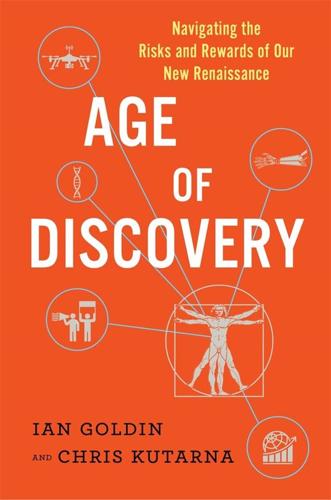
Age of Discovery: Navigating the Risks and Rewards of Our New Renaissance
by
Ian Goldin
and
Chris Kutarna
Published 23 May 2016
Developmental forces today have raised the global population of healthy, brainy people to its highest level ever. Connective forces—in politics, trade, finance, population migration—have tangled human society together. These same forces have also impacted the spread of ideas. The volume, variety and richness of their flows through this tangle have exploded. New general-purpose technologies New general-purpose technologies have once again made mass communication cheap and abundant. Increased computing power has made the flow of ideas more diverse and abundant, and advanced the complexity of what we can say to each other. Thanks to the compound growth in computing power identified by Moore’s Law, the smartphone that fits in our pockets today is faster than the Cray-2 supercomputer—the world’s most powerful machine in 1990, which weighed in at 5,500 pounds and had a price tag of $35 million.41 Moore’s Law has brought the Internet to all our fingertips, but it has also taken us to the edge of the universe.
…
New exchanges between civilizations, expanding trade and financial links, social mobility, urbanization and migration together created many more contact points between diverse people and their ways of life. Then and now, one of the best ways to push the limits of our present thinking is to meet people who think differently. The most direct catalyst of this enhanced flow of ideas was the new medium of print. The printing press was what today we would classify as a “general-purpose technology.”36 Unlike, say, the violin, whose arrival transformed music but affected little beyond that sphere, the press affected virtually every domain of activity. It multiplied the available body of knowledge and broadened the network of practitioners in every field. Among scholars, the medieval practice of writing letters to friends and holding local debates evolved into publishing booklets for wide distribution and critique.
…
Among scholars, the medieval practice of writing letters to friends and holding local debates evolved into publishing booklets for wide distribution and critique. Engaging greater numbers of people brought a wider set of knowledge, experience and ideas to every important problem. Print helped distribute another general-purpose technology: mathematics. In 1494, Luca Pacioli printed his Summa de Arithmetica, Geometria, Proportioni et Proportionalità in Venice, and helped launch the mass adoption of arithmetic in Europe. Prior to print, it was mostly only learned elites who knew Hindu-Arabic numerals. Most math was still calculated with Roman numerals and an abacus, and the need for the latter piece of hardware meant most people couldn’t afford to do their own sums.

Red Flags: Why Xi's China Is in Jeopardy
by
George Magnus
Published 10 Sep 2018
On the one hand, ambitious plans for leadership in artificial intelligence and other advanced technologies might be a game-changer for productivity growth. On the other hand, we don’t know if China’s digital authoritarianism is appropriate to harness fully what is most likely the world’s newest general-purpose technology. By the 2020s, we should know whether China is going in the right direction. Or, indeed, whether, despite everything, it is headed for a situation in which the rising share of global GDP and surging income per head stall or get trapped. Defining the trap The term ‘middle-income trap’ was coined in 2005 by two World Bank economists, Indermit Gill and Homi Kharas, who used it to describe economies that were being squeezed between low-wage and poorer competitors, and high-wage, richer innovators.
…
The Soviet Union, for example, was no slouch when it came to science, space, engineering and research and development. Neither was ancient China. And yet, these were not enough. We should at least consider, therefore, how important robust institutions and governance are to realising sustained productivity improvements. And also just what so-called general purpose technologies entail, how they differ from run-of-the-mill innovation and invention, and whether they can fulfil their potential in a state- and target-driven model. Governance, institutions and Xi’s new authority China faces an important governance challenge. Some believe it is about whether the Communist Party system is strong enough to survive or derive continuous legitimacy, but its status and prestige are, for the foreseeable future at least, not in question.
…
No one should think that China isn’t deadly serious about this, or that Chinese innovation nowadays is mostly about copying Western ideas more cheaply. China and the West both want to be tech leaders, and will probably have to settle for sharing the spoils. This is no ordinary tech race, though, and what sets it apart is that the ultimate prize is the full exploitation and commercialisation of what is almost certainly our newest general-purpose technology (GPT). Following in the footsteps of steam, railroads, electricity, the internal combustion engine and the internet, this GPT will also be distinguished not by big data or AI, specifically, but by the hundreds of other innovations and changes that they spawn in many other sectors, products and processes.

Cogs and Monsters: What Economics Is, and What It Should Be
by
Diane Coyle
Published 11 Oct 2021
The second is what makes policies effective in delivering progress in this non-linear, complex world, that is not amenable to simple causal explanations? What Counts as Progress in a Digital World? The story starts with digital technology. Its consequences are certainly not deterministic, but as a ‘general purpose technology’ used widely across the economy, it sparks innovation, changes behaviour, and forces reactions and significant adjustments in the economy and society. The growing use of artificial intelligence (AI) or machine learning (ML) systems seems likely to accelerate this. The pervasive effects of the new technologies on economic and social life are driving a reassessment of the current framework for classifying and measuring the economy, especially the shorthand indicator of economic progress, GDP.
…
The distinctive economic characteristics of digital technology mean that the way we think about economics itself has to change. Digital Is Different ‘Digital’ has become shorthand for ICTs or information and communication technologies. It is an example of what economists denote as a general purpose technology (Helpman 1998), which have the following features: They enable radical innovation in products and services and also in processes of production, initially in the innovating sector and gradually across a wider range of activities in the economy; They lead to a major re-organisation of the structure of the economy, because they change relative input costs dramatically; They require significant additional investment in other areas such as other forms of capital, infrastructure, organisation, skills, and so often start out very slowly, before eventually having dramatic economic and societal impacts.
…
These were les trentes glorieuses, the thirty glorious years in Fourastié’s famous term (Fourastié 1979). Electricity in homes and factories became universal, access to cars spread with towns and cities built or rebuilt to accommodate them, while radio and cinema had their heyday. Electricity and the internal combustion engine are examples of general purpose technologies, technologies which can be used for a range of purposes and spread widely through the economy, with substantial economic and social effects. These technologies, invented in the late nineteenth century, delivered the growth and productivity of the mid-twentieth century. However, the thirty golden years contained the seeds of the next political economy cycle.

Boom: Bubbles and the End of Stagnation
by
Byrne Hobart
and
Tobias Huber
Published 29 Oct 2024
Real growth is woven from specific threads. Of course, some technologies are generally applicable—anything that radically reduces the cost of energy, communication, or computation will have spillover effects just about everywhere. But to say that low interest rates benefit general-purpose technologies is to implicitly outsource the biggest question—which general-purpose technologies?—to nobody in particular, and to assume that the principal bottleneck is a lack of funding. Another manifestation of higher time preferences is the rise of passive investing and indexing, which have radically altered financial markets. Passive investing strategies replicate the performance of financial indices, such as the S&P 500 or the VIX volatility index.
…
These projects have a substantial impact on human progress and flourishing, acting not only as a catalyst for much-needed progress but also—as Part III will make clear—playing a deeper symbolic and spiritual role in our allegedly secular age. 133 Charles Mackay, Extraordinary Popular Delusions and the Madness of Crowds (New York: Simon and Schuster, 2012). 134 Bitcoin is a novel general-purpose technology that has escaped the gravitational pull of the Great Stagnation. By solving the problem of digital scarcity, it represents a radically novel mechanism to send and store value across time and space. And by inducing higher time preferences and reorienting our collective concern from the present to the future, it represents a radical upgrade of the technology of money—rebooting what the economist Hans-Hermann Hoppe calls “the process of civilization.”
…
This talent clustering made subsequent recruiting even easier. And, as with other bubbles, the R&D investment bubble was inflated thanks to competitive pressure—from other firms and from the Soviets. The R&D investment boom was also a product of wider industrial developments. One key predicate was the widespread deployment of general-purpose technologies like railroads, the internal combustion engine, mass production, and electricity. These technologies made further inventions possible and more valuable. For instance, a rail network created a national market for goods, which firms were able to supply through mass production. Since a business with more customers can afford higher fixed costs, it can spend more on research.

Rule of the Robots: How Artificial Intelligence Will Transform Everything
by
Martin Ford
Published 13 Sep 2021
For those of us who live in the developed world, there is virtually nothing that is not somehow touched by, or indeed made possible by, access to electric power. Electricity is probably the best—and certainly the most durable—example of a general-purpose technology: in other words, an innovation that scales across and transforms every aspect of the economy and society. Other general-purpose technologies include steam power, which produced the Industrial Revolution, but is now relegated to a few applications like nuclear power plants. The internal combustion engine was certainly transformative, but it’s now quite easy to imagine a future where gas and diesel engines are almost entirely displaced—likely by electric motors.
…
The internal combustion engine was certainly transformative, but it’s now quite easy to imagine a future where gas and diesel engines are almost entirely displaced—likely by electric motors. In the absence of some dystopian catastrophe scenario, it’s almost impossible to imagine a future without electricity. It is, therefore, an extraordinarily bold claim to argue that artificial intelligence will evolve into a general-purpose technology of such scale and power that it can reasonably be compared to electricity. Nonetheless, there are good reasons to believe that this is the path we are on: AI, much like electricity, will eventually touch and transform virtually everything. Artificial intelligence is already impacting every sector of the economy, including agriculture, manufacturing, healthcare, finance, retail and virtually all other industries.
…
Is AI just another example of a labor-saving innovation like the agricultural technology that transformed farming? Or is it something fundamentally different? My argument has been that AI is indeed different, and the reason is anchored in the core thesis of this book: that artificial intelligence is a systemic, general-purpose technology not unlike electricity, and it will therefore ultimately scale across and invade every aspect of our economy and society. Historically, labor market technological disruptions have tended to impact on a sector-by-sector basis. Agricultural mechanization destroyed millions of jobs, but a rising manufacturing sector was available to eventually absorb those workers.
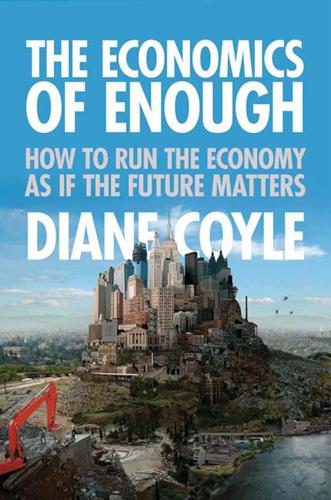
The Economics of Enough: How to Run the Economy as if the Future Matters
by
Diane Coyle
Published 21 Feb 2011
Economies have always depended on trust, but a successful modern economy in which the division of labor has become very highly specialized and every individual depends on a large and complex network of other people in many countries is profoundly more dependent on high levels of trust. New information technologies, from printing to the railways, the telegraph to the Internet, have (like new energy-related technologies and other examples of what the literature terms “general purpose” technologies) always resulted in profound social and economic changes. This comes about in many ways. The results are unpredictable and can take decades to achieve in full, but they are ultimately transformational. This was true of steam power, railways, and electrification. It is just as true now.
…
For example, Paul David drew an analogy with electrification, which required new types of factory building and investment in electric networks, before the economic impact was large and widespread.15 Nicholas Crafts pointed out that although the estimates of the impact of modern ICTs on economic growth might appear small, they were much larger than the historical figures for the impact of steam, and few people would argue that had not been a profoundly important technology.16 However, steam, like electricity or the railways, had taken decades to have its full impact. Businesses didn’t invest in steam power until the older technologies ceased to be profitable, and often it was new businesses that adopted new technologies. Like any new “general purpose technology,” or in other words a technology with a wide range of applications, ICTs are reshaping the economy. Elsewhere, I’ve described this phenomenon as “weightlessness.”17 This is because advanced economies are shifting significantly toward the creation of value that is intangible, either in the form of services, or in the form of the innovations, design, creativity, or customization embedded in physical goods.
…
Smart cards and electronic monitoring have made it feasible to exclude some drivers from the roads at certain times. In all of these examples, the role of government—the type of intervention needed—has changed. The new information and communications technologies have had a more profound effect on market economies, however. They form what economists refer to as a “general purpose technology” because they affect the organization of the economy in a wide-ranging way, like steam or electricity or rail in the past.20 One widespread effect has been to increase the scope of economies of scale, as there are many industries in which it is now possible to reach a much larger number of consumers at very little additional cost, thanks to the possibilities of online marketing and distribution.

The Entrepreneurial State: Debunking Public vs. Private Sector Myths
by
Mariana Mazzucato
Published 1 Jan 2011
Figure 13 Origins of popular Apple products Figure 14 Global new investment in renewable energy (US$, billions) Figure 15 Government energy R&D spend as % GDP in 13 countries, 2007 Figure 16 Subsectors of venture capital within clean energy Figure 17 The global market for solar and wind power (US$, billions), 2000–2011 LIST OF ACRONYMS AEIC American Energy Innovation Council ARPA-E Advanced Research Projects Agency – Energy (US Department of Energy) ARRA American Recovery and Reinvestment Act ATP Advanced Technology Program BIS Department of Business, Innovation and Skills (UK) BNDES Banco Nacional de Desenvolvimento Econômico e Social (Brazilian Development Bank) CBI Confederation of British Industries CBO Congressional Budget Office (UK) CERN European Organization for Nuclear Research, Geneva DARPA Defense Advanced Research Projects Agency (USA) DECC Department of Energy and Climate Change (UK) DEMOS UK think tank DoD US Department of Defense DoE US Department of Energy DRAM Dynamic random-access memory EC European Commission, Brussels EPA Environmental Protection Agency (USA) EPRI Electric Power Research Institute FDA Food and Drug Administration (USA) FINNOV FINNOV EC FP7 project (www.finnov-fp7.eu) FIT Feed-in tariff GDP Gross domestic product GE General Electric GMR Giant magnetoresistance GPS Global positioning system GPT General purpose technology GW Gigawatt GWEC Global Wind Energy Council HM Treasury Her Majesty’s Treasury (UK) IP Intellectual property IPO Initial public offering on stock market IPR Intellectual property rights MIT Massachusetts Institute of Technology MITI Ministry of International Trade and Industry (Japan) MRC Medical Research Council (UK) MW Megawatt NAS National Academy of Sciences (USA) NBER National Bureau of Economic Research (USA, non-profit) NESTA National Endowment for Science, Technology and the Arts (UK) NIH National Institutes of Health (USA) NIST National Institute of Standards and Technology (USA) NME New molecular entity NNI National Nanotechnology Initiative (USA) NSF National Science Foundation (USA) NYT New York Times (USA) OECD Organisation for Economic Co-operation and Development OSTP Office of Science and Technology Policy (USA) OTA Office of Technology Assessment (USA) OTP Office of Tax Policy (USA) PhRMA Pharmaceutical Research and Manufacturers of America (trade association) PIRC Public Interest Research Centre (USA, non-profit) PV Photovoltaic R&D Research and development S&P 500 Standard & Poor’s (S&P) stock market index, based on the market capitalizations of 500 leading companies publicly traded in the US SBIC Small Business Investment Company (USA) SBIR Small Business Innovation Research (USA) SITRA Suomen itsenäisyyden juhlarahasto (Finnish Innovation Fund) SMEs Small and medium enterprises SRI Stanford Research Institute (USA, non-profit) SST (American) Supersonic Transport project TFT Thin-film transistor TFP Total factor productivity TW Terawatt VC Venture capital WIPO World Intellectual Property Organization ACKNOWLEDGEMENTS The book could not have been written without the intellectual stimulus and hard work of many colleagues and friends.
…
By looking at examples of the State’s leading role in the development of Internet- and nanotechnology we will further develop our understanding of the link between R&D and growth, and the public–private divide. Not all innovations lead to economy-wide growth. Economy-wide growth is generally caused by new products or processes that have an impact on a wide variety of sectors in the economy, as was the case with the rise with electricity and computers. These are what macroeconomists call general purpose technologies (GPTs). GPTs are characterized by three core qualities: • They are pervasive in that they spread into many sectors. • They improve over time and should keep lowering the cost to their users. • They make it easier to spawn innovation through the invention and production of new products or processes (Helpman 1998).
…
The National Nanotechnology Initiative The entrepreneurial role that the State can play to foster the development of new technologies, which provide the foundation for decades of economic growth, has most recently been seen in the development of nanotechnology in the US. The types of investments and strategic decisions that the State has made have gone beyond simply creating the right infrastructure, funding basic research, and setting rules and regulations (as in a simple ‘systems failure’ approach). Nanotechnology is very likely to be the next general purpose technology, having a pervasive effect on many different sectors and becoming the foundation of new economic growth. However, while this is commonly accepted now, in the 1990s it was not. Motoyama, Appelbaum and Parker (2011, 109–19) describe in detail how the US government has in fact been the lead visionary in dreaming up the possibility of a nanotech revolution – by making the ‘against all odds’ initial investments and by explicitly forming dynamic networks that bring together different public actors (universities, national labs, government agencies) and when available, the private sector, to kick start a major new revolution which many believe will be even more important than the computer revolution.

AI Superpowers: China, Silicon Valley, and the New World Order
by
Kai-Fu Lee
Published 14 Sep 2018
Some of them change how we perform a single task (typewriters), some of them eliminate the need for one kind of labor (calculators), and some of them disrupt a whole industry (the cotton gin). And then there are technological changes on an entirely different scale. The ramifications of these breakthroughs will cut across dozens of industries, with the potential to fundamentally alter economic processes and even social organization. These are what economists call general purpose technologies, or GPTs. In their landmark book The Second Machine Age, MIT professors Erik Brynjolfsson and Andrew McAfee described GPTs as the technologies that “really matter,” the ones that “interrupt and accelerate the normal march of economic progress.” Looking only at GPTs dramatically shrinks the number of data points available for evaluating technological change and job losses.
…
Renren, 42–43 lean startup methodology, 44–45 Ma, Jack, and, 34–37 search habit divergence and, 37–38 Silicon Valley and, 22–25, 28, 30–34, 39–40, 49 Wang Xing and, 22–24, 26, 31, 32–33, 42, 46–49 War of a Thousand Groupons, 45–49 Zhou Hongyi and, 40–42 corporate oligarchy, 171 corporate research and proprietary technology, 91–92 corporate social responsibility, 216–17 craftsmanship, 229 credit industry, 10–11, 110, 112–13, 116 crime disruption, 75 Cultural Revolution in China, 33 Cybersecurity Law in China, 125 D Daimler, 135 data age of, 14, 18 AI algorithms and, 14, 17, 56, 138 AI-rich countries and, 168–69 businesses and, 110–11 China’s abundance of, 15, 16, 17, 50, 55–56, 73, 79 collection of, and privacy, 124–25 deep learning and, 14, 17, 19–20, 56 internet companies and, 107–8 medical diagnosis and, 114 from mobile payments, 77 neural networks and, 9 pattern-finding in, 10 private, 124–25 self-driving cars and, 131–32, 133 structured, 111–12 Deep Blue, 4, 5 deep learning AI revolution and, 5, 12–13, 25, 92, 94, 143 business AI and, 111 data and, 14, 17, 19–20, 56 Google and, 92 history of, 6–10 implementation of, 12–14, 86 machine perceptual abilities and, 166 next, 91–92, 94 pattern-finding and, 10–11, 13, 166–67 rapid progress of, 161 DeepMind AI in United Kingdom and, 169 AlphaGo and, 2, 11 AlphaGo Zero and, 90 Google and, 2, 11, 92 iFlyTek compared to, 105 publishing by, 91 reinforcement learning and, 143 Deng Xiaoping, 28 desktop computers, 96 Dianping (Yelp copycat), 48, 49, 71–72 Didi four waves of AI and, 106 going heavy, 72–73 self-driving cars and, 131 services using model of, 213–14 Uber and, 40, 68–69, 79, 137 Didi Chuxing, 68–69, 70 discovery to implementation, transition from, 13, 15 Disneyland replica in China, 31 Disruptor (Zhou), 42 DJI, 130–31 domestic workers, 130 drones, autonomous, 130–31, 136, 167–68 dual-teacher model, 122 dystopians vs. utopians, 140–44 E EachNet, 35 Eat24, 72 eBay, 35–37, 39 economy and AI, 144–73 competition and, 106 deep-learning breakthroughs and, 4–5 general purpose technologies (GPTs), 148–55 global economic inequality, 146, 168–70, 172 intelligent vs. physical automation, 167–68 job loss, two kinds of, 162–63 job losses, bottom line, 164–65 job loss studies, 157–61 jobs and inequality crisis, 145–47 machine learning as driver, 25, 84, 91, 94–95 monopolies, 20, 96, 168–69, 170–71 psychological crisis, 5, 21, 147, 173–74 risk of replacement, 155–57 science-fiction visions and, 144–45 techno-optimists and the Luddite fallacy, 147–48 unemployment.
…
See wealth and class inequality See also business AI; human coexistence with AI Edison, Thomas, 13, 86 education employment and, 205 OMO-powered, 121–24 revamping, 228–29 social investment stipend and, 221–22 Einstein, Albert, 103 electrification, compared to AI, 13–15, 25, 50, 86, 149–50, 152, 154, 228 Element AI, 111 engineering bottlenecks, 158 enterprise software, 111–12 Estonia, 137 European Union, 124–25, 229 expertise to data, transition from, 14, 15, 56 expert systems, 7–8 F F5 Future Store, 163 Face++, 90, 117 Facebook Cambridge Analytica and, 107–8, 125 Chinese companies compared to, 28 Chinese researchers at, 90 cloning of, 22–23, 24, 31, 32–33 deep-learning experts and, 11 as dominant AI player, 83, 91 Face++ and, 90 global markets and, 137 iFlyTek compared to, 105 innovation mentality at, 33 monopoly of social networks, 170 resistance to product modifications, 34 split with Messenger, 70 Tencent compared to, 109 top researchers at, 93 U.S. digital world dominance and, 2 Facebook AI Research, 91 facial recognition AI chips and, 96 Apple’s iPhone X and, 117 Chinese investment in, 99 device security and, 117 education, AI-powered, and, 122 Face++ and, 90, 117 mobile payments and, 118 privacy and, 124 public transportation and, 84 fake news detection, 109 Fanfou (Twitter clone), 23, 46 Fermi, Enrico, 85, 103 financial crisis (2008), 46, 100, 165, 205 financial sector, 111, 112–13, 116 Fink, Larry, 215–16 Fo Guang Shan monastery, 187, 218–20 “Folding Beijing” (Hao), 144–45, 172, 230 food delivery, 69, 72, 79 Forbidden City, 29 Ford, 135 Ford, Martin, 165 4th Paradigm, 111 four waves of AI, 104–39 autonomous AI, 105–6, 128–36 business AI, 105–6, 110–17 economic divides and, 145 global markets and, 136–38 internet AI, 105–6, 107–10 perception AI, 105–6, 117–28 France, 20, 169 freemium revenue model, 36 Frey, Carl Benedikt, 158 Friendster, 22 G Gates, Bill, 33 general AI, 10, 13 General Data Protection Regulation, 124–25 general purpose technologies (GPTs), 148–55 gig economy, 164 global AI markets, 136–38 global AI story, 226–32 AI future without AI race, 227–28 global wisdom for AI age, 228–29 hearts and minds, 231–32 writing, 230 global economic inequality, 146, 168–70 globalization, 150 GMI (guaranteed minimum income), 206–7 Go (game), 1–2, 4, 5, 167 going light vs. going heavy, 71–73, 76–77, 209 Google AI chips and, 96 AlphaGo and, 1, 2, 11 Baidu compared to, 37, 38, 109 China at time of founding of, 33 Chinese entrepreneurs compared to, 24–25 Chinese market and, 39 data captured by, 77 as dominant AI player, 83, 91, 93–94 elite expertise at, 138–39 Europe’s fining of, 229 Face++ and, 90 global markets and, 137 grid approach and, 95 iFlyTek compared to, 105 innovation mentality at, 33 internet AI and, 107, 109 mobile payments and, 75 monopoly of search engines, 170 vs. other technology companies, 92–94 resistance to product modifications, 34 self-driving cars and, 131–32, 135 TensorFlow, 95, 228 top researchers at, 93 U.S. digital world dominance and, 2 See also DeepMind Google Brain, 45 Google China, 29–30, 31–32, 37–38, 41, 52, 57 Google Wallet, 75, 76 GPTs (general purpose technologies), 148–55 Grab, 137 great decoupling, 150, 170, 202 grid approach, 94–95 “Gross National Happiness,” 229 ground-up disruptions and job threats, 162–63, 164 Groupon, 23, 24, 45–46, 47–48, 49 Grubhub, 72 guaranteed minimum income (GMI), 206–7 guiding funds, 63, 64, 98–99 Guo Hong, 51–52, 56, 61–62, 63, 64, 68 H Hall of Ancestor Worship, 29–30 Hangzhou, China, 75, 94, 99 Hao Jingfang, 144–46, 168, 172, 230 Harari, Yuval N., 172 hardware innovation, 125–28 Hassabis, Demis, 141 Hawking, Stephen, 141 healthcare, 103, 113–15, 116, 195, 211–13.

Rise of the Robots: Technology and the Threat of a Jobless Future
by
Martin Ford
Published 4 May 2015
The first is that IT has evolved into a true general-purpose technology. There are very few aspects of our daily lives, and especially of the operation of businesses and organizations of all sizes, that are not significantly influenced by or even highly dependent on information technology. Computers, networks, and the Internet are now irretrievably integrated into our economic, social, and financial systems. IT is everywhere, and it’s difficult to even imagine life without it. Many observers have compared information technology to electricity, the other transformative general-purpose technology that came into widespread use in the first half of the twentieth century.
…
As machines take on that routine, predictable work, workers will face an unprecedented challenge as they attempt to adapt. In the past, automation technology has tended to be relatively specialized and to disrupt one employment sector at a time, with workers then switching to a new emerging industry. The situation today is quite different. Information technology is a truly general-purpose technology, and its impact will occur across the board. Virtually every industry in existence is likely to become less labor-intensive as new technology is assimilated into business models—and that transition could happen quite rapidly. At the same time, the new industries that emerge will nearly always incorporate powerful labor-saving technology right from their inception.
…
(magazine), 234 incentives basic income guarantee and, 261–264 economic, 279 income consumer behavior and reduced, 210–211 decline in, for recent college graduates, 48–49 distribution preferred by American public, 47 national, share going to labor, 38–39, 41, 56, 58 ratio to debt, 199–200 retirement, 222 See also basic income guarantee income inequality, xvi–xvii consumer spending and, 198–202 economic growth and, 212–215 economists on, 202–206 financialization and, 56 increase in, xi–xii, 46–48, 212–215 politics as driver of, 57 income stagnation, economic effects of, 215–220 The Independent (newspaper), 229 India, 120 Indian Institute of Technology Madras, 245 Indonesia, 11 Industrial Perception, Inc., 2, 3, 5, 21n industrial robots, 1–5, 10–11 inflation, relation between wages and productivity and, 38n informal economy, 77–78 information technology, xvi acceleration of, 52, 63–65 characteristics of, 69–73 cloud computing and jobs in, 106 cognitive capability of, 72, 73 comparative advantage and, 73–75 compared to electrification, 72–73, 176 disruption of higher education and, 139–144 economic trends and, 58–61 financial sector growth and, 56–57 funding of basic research for, 80–81 as general-purpose technology, 72 health care sector and, 145–147 lack of broad-based progress and, 64–65 moral questions regarding, 79–81 S-curves, 68, 69–70 winner-take-all distribution and, 75–79 See also artificial intelligence (AI); Moore’s Law infrastructure, investment in public, 276 innovation, 1–8, 51–58, 65 In Our Hands: A Plan to Replace the Welfare State (Murray), 262–263 In-Q-Tel, 85 Inside Higher Ed (website), 136 Instagram, 175, 176 Institute of Medicine, 149 Intel, 70n intelligence machine, 72, 75, 80 replication of, 75 super-intelligence, 236, 236n Intelligent Information Laboratory (Northwestern University), 84 intelligent vending machines and kiosks, 17–19 International Federation of Robotics, 3 International Labour Organisation, 181 International Monetary Fund, 214, 215 International Technology Roadmap for Semiconductors (ITRS), 69 Internet beginning of, 52 big data and, 86 corporations spawned by, 75–76 effect on thinking ability, 254 income opportunities and, 76 medical resources on, 148 winner-take-all distribution and, 75–79 Internet sector, 76–78 investment in labor-savings technology, 227–228 in public infrastructure, 276 recessions and, 227 iPad/iPod, 17–18, 179 iPhone, 79, 161 iRobot, 5 I-Sur project, 154–155 Italy, 41, 221 ITRS.

Prediction Machines: The Simple Economics of Artificial Intelligence
by
Ajay Agrawal
,
Joshua Gans
and
Avi Goldfarb
Published 16 Apr 2018
Robert Solow, a Nobel laureate economist, lamented, “You can see the computer age everywhere but in the productivity statistics.”1 From this challenge came an interesting business movement called “reengineering.” In 1993, Michael Hammer and James Champy, in their book Reengineering the Corporation, argued that to use the new general-purpose technology—computers—businesses needed to step back from their processes and outline the objective they wanted to achieve. Businesses then needed to study their work flow and identify the tasks required to achieve their objective and only then consider whether computers had a role in those tasks. One of Hammer and Champy’s favorite examples was the dilemma Ford faced in the 1980s, not with making cars but with paying everyone.2 In North America, its accounts payable department employed five hundred people, and Ford hoped that by spending big on computers, it could reduce that number by 20 percent.
…
Once again, a shared database powered by an enterprise computer system improved decision making, reduced handling, and dramatically improved productivity. In the end, one person had authority over an application, with processing falling to between four hours and a few days. Like classical computing, AI is a general-purpose technology. It has the potential to affect every decision, because prediction is a key input to decision making. Hence, no manager is going to achieve large gains in productivity by just “throwing some AI” at a problem or into an existing process. Instead, AI is the type of technology that requires rethinking processes in the same way that Hammer and Champy did.
…
Even Andy Grove, who famously quipped that “only the paranoid survive,” would have to admit that you would’ve been pretty darn paranoid to have foreseen how far and wide the smartphone would reach into some very traditional industries. The recent developments in AI and machine learning have convinced us that this innovation is on par with the great, transformative technologies of the past: electricity, cars, plastics, the microchip, the internet, and the smartphone. From economic history, we know how these general-purpose technologies diffuse and transform. We also realize how hard it is to forecast when, where, and how the most disruptive changes will take place. At the same time, we have learned what to look for, how to be ahead of the curve, and when a new technology is likely to transition from something interesting to something transformative.

The People vs Tech: How the Internet Is Killing Democracy (And How We Save It)
by
Jamie Bartlett
Published 4 Apr 2018
This explains why Siemens has spent $4 billion acquiring smart manufacturing capabilities to build its industrial platform MindSphere, and why General Electric is working to build its own platform, called ‘Predix’. ‘It’s winner takes all,’ General Electric’s chief digital officer said recently. The same rule will apply to many of the AI techniques I discussed in the last chapter. AI is what’s known as a ‘general purpose’ technology, meaning it can be applied in a wide variety of contexts. Although the specific application is very different, driverless vehicles like Stefan’s Starsky trucks use similar techniques of data extraction and analysis as AI-powered crime-prediction technology or CV analysis. Google’s DeepMind, for example, doesn’t just win at Go – it is currently pioneering exciting new medical research and has already dramatically cut the energy bills at Google’s huge data centres by using deep learning to optimise the air conditioning systems.6 There are countervailing tendencies, of course – some experts have got together to develop ‘open source’ AI which is more transparent and, hopefully, carefully designed, but the direction of progress is clear – just follow the money.
…
If Locke, Rousseau, Jefferson, Montesquieu – each in their own way architects of modern democracy – were transported to 2018, they’d be dazzled by our smart phones, planes, bitcoins, hospitals, emojis and rocket launchers. They’d also be amazed to discover that we still run our democracies in the same way as in the days of carts and horses, muskets and candles. Each phase of democracy should be a product of its time – its genius is that it can change. Like artificial intelligence, democracy is a ‘general purpose’ technology. Ancient Athenians could manage face-to-face city-level democracy. Once society became too large and complex, representative democracy emerged as a way to keep it working. The mass party and the mass taxation systems of democracy were then layered on top when industrialism and mass suffrage arrived.
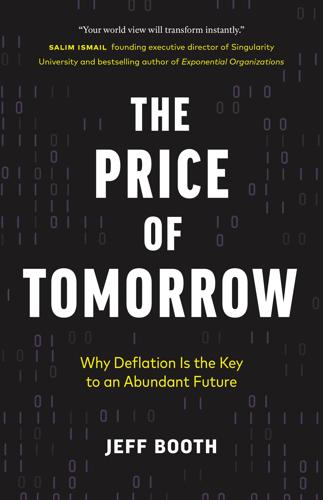
The Price of Tomorrow: Why Deflation Is the Key to an Abundant Future
by
Jeff Booth
Published 14 Jan 2020
In fact, many of the breakthroughs in artificial intelligence were created by Canadian researchers who continued working in the space through AI’s dark winter of the ’80s and ’90s. One of the speakers at the conference was Mark Carney, governor of the Bank of England. Carney explained that artificial intelligence is an example of a general purpose technology—by which he meant a technology that can affect an entire economy and drastically alter society. He compared it to electrification of the world in the early twentieth century. He explained how economies went through dramatic changes because many jobs were eliminated by electricity, and workers needed to be retrained for new jobs that hadn’t existed before.
…
He showed how, as electrification intensified, economies at first suffered and lost jobs, but then increasingly flourished as the new technology created new industries and countless new jobs for the transitioned workers. While sitting in the audience, I couldn’t help thinking that, while Carney was right about electricity being a general purpose technology, the analogous optimistic outlook for AI sounded like something that he wanted to be true, rather than something that had a high probability of actually coming true. Equating artificial intelligence to electricity was a bad comparison for a number of important reasons. Firstly, electricity wasn’t an exponential technology.

The Zero Marginal Cost Society: The Internet of Things, the Collaborative Commons, and the Eclipse of Capitalism
by
Jeremy Rifkin
Published 31 Mar 2014
Gunpowder blew up the knightly class, the compass discovered the world market and founded the colonies, and the printing press was the instrument of Protestantism and the regeneration of science in general; the most powerful lever for creating the intellectual prerequisites.10 Neither Smith nor Marx seemed to understand, however, that the print revolution and water and wind power were indispensable to each other and that together they created a general-purpose technology platform for an economic paradigm shift that changed the European social and political landscape. The water mill was known in antiquity and experimented with in Rome. Yet the technology never developed sufficiently to challenge human slavery as a power source. New technological innovations, beginning in the tenth and eleventh centuries in Europe, catapulted water power to the center of economic life.
…
They found that it is “the increasing thermodynamic efficiency with which energy and raw materials are converted into useful work” that accounts for most of the rest of the gains in productivity and growth in industrial economies. In other words, “energy” is the missing factor.4 A deeper look into the First and Second Industrial Revolutions reveals that the leaps in productivity and growth were made possible by the communication/energy matrix and accompanying infrastructure that comprised the general-purpose technology platform that firms connected to. For example, Henry Ford could not have enjoyed the dramatic advances in efficiency and productivity brought on by electrical power tools on the factory floor without an electricity grid. Nor could businesses reap the efficiencies and productivity gains of large, vertically integrated operations without the telegraph and, later, the telephone providing them with instant communication, both upstream to suppliers and downstream to distributors, as well as instant access to chains of command in their internal and external operations.
…
Common sense, yes, but it was lost in the fury that followed President Obama’s remarks, in a country where the prevailing myth is that all economic success is a result of entrepreneurial acumen alone and that government involvement is always a deterrent to growth. Public infrastructure is, for the most part, paid for or subsidized by taxes and overseen and regulated by the government, be it on the local, state, or national level. The general-purpose technology infrastructure of the Second Industrial Revolution provided the productive potential for a dramatic increase in growth in the twentieth century. Between 1900 and 1929, the United States built out an incipient Second Industrial Revolution infrastructure—the electricity grid, telecommunications network, road system, oil and gas pipelines, water and sewer systems, and public school systems.

Stakeholder Capitalism: A Global Economy That Works for Progress, People and Planet
by
Klaus Schwab
Published 7 Jan 2021
Engineers, designers, and architects are combining computational design, additive manufacturing, materials engineering, and synthetic biology to pioneer a symbiosis between microorganisms, our bodies, the products we consume, and even the buildings we inhabit.58 The technologies of the Fourth Industrial Revolution once again have the possibility to greatly enhance global wealth. That is because they are likely to turn into general-purpose technologies (GPTs) such as electricity and the internal combustion engine before them. The most powerful of these GPTs is likely to be artificial intelligence, or AI, according to economists such as Eric Brynjolfsson.59 Already, major tech companies from countries such as China are using AI applications to leapfrog the leading companies from the US.
…
See Asian Tigers Fourth Industrial Revolution, 18, 45, 68, 71, 116, 122, 125, 142–145, 161–162, 177, 186, 201, 208, 212, 213, 237, 239 The Fourth Industrial Revolution (Schwab), 116 Foxconn (Taiwan), 59 France Compagnie de Suez join stock company of, 103 First Industrial Revolution spreading to, 131 La France Insoumise populist party of, 81 vote for right-wing populist parties (2000, 2017–2019), 84fig Yellow Vests (Gilets Jaunes) protests of, 86–87, 195 Youth for Climate movement (2017), 86 La France Insoumise (France), 81 The Freelance Isn't Free Law (New York), 243 Freelancers Union (New York), 242–243 Freelancing work, 237–238, 240–243 Freund, Caroline, 138 Frey, Carl, 116, 135 Frick Coke Company, 132 Frick, Henry, 132 Fridays for Climate strikes (2018), 149, 250 Friedman, Milton, 14, 136, 175, 205, 209 Friedrichshafen (Germany), 4–5, 6–7, 8–9, 251 Fukuyama, Francis, 15, 112 “The Future of Employment” study (2013), 116 G G7 countries, social compact breaking down in, 110–111 Gama, Vasco da, 97 Garikipati, Supriya, 224 Gates, Bill, 132 Gazivoda, Tin, 195 GDP (gross domestic product) China's increased total debt–to–GDP ratio, 62 COVID crisis impact on public debt and, 19 description and function of, 9, 24 emerging markets (2002–2019), 64–65fig formula for calculating, 24 New Zealand's COVID-19 response and impact on, 222–223 New Zealand's focus on social issues instead of, 234–236 post-World War II low level of, 105 private sector percentage of China's, 172 Simon Kuznets' warning on progress measured by, 21–25, 34, 46, 53 Singapore (1965–2019), 123–125 stakeholder model going beyond profits and, 189–193 trade globalization measured by percentage of, 16 See also GNI (gross national income); GNP (gross national product) GDP growth declining rates since the 1960s, 25–28 differentiating between global, national, and regional, 27–28 singular focus of policymaking on, 25 as “war-time metric,” 25 Gender pay equity, 243 Gender representation advocacy of, 243–244 Ireland's experiment in, 194 as stakeholder model issue, 188–189 General Data Protection Regulation (European Union), 212 General-purpose technologies (GPTs), 143 Generation Z workers, 240 German reunification, 17, 78 Germany Berlin Wall (1961–1989) dividing, 75–77, 88, 89 Christian–Democrats (CDU) political party of, 78, 79 erosion of the political center in, 80–90 extreme views replacing Volksparteien, 80, 83 female-led government leadership during COVID-19 pandemic in, 224 First Industrial Revolution spreading to, 131 following the First World War, 4 growing populism and polarizing politics (2020) in, 79, 87–88 Hartmann machine works (Chemnitz, Kingdom of Saxony), 103fig integration of East and West, 17, 78 lowering debt burden through economic growth, 31 neo-Nazi elements protesting COVID-19 responses, 87 reconstruction of post-war economy and society, 3, 7–11, 251 social reforms (1880s) in, 133 Social–Democrats (SPD) political party of, 78, 80–81 stakeholder concept adopted in, 174 “Stunde Null” (or “Zero Hour”) [May 8, 1945] ending the war, 5 vote for right-wing populist parties (2000, 2017–2019), 84fig well-managed COVID crisis response in, 79 See also East Germany; West Germany Ghana, 27, 70 Gig workers, 187–188, 237–238, 240–243 Gig Workers Rising (California), 241 Gig worker strike (2019), 187 Gig Workers United (California), 241 The Gilded Age: A Tale of Today (Twain and Warner), 133 Gini coefficient of China/India, 37fig–38, 226 Global Competitiveness Index (World Economic Forum), 189, 190 Global debt population pyramid and repayment of, 30 problem of rising, 28–31 what is included in, 28 Global economic growth ASEAN nations, 63–66, 67fig “the Asian Century,” 70–71fig Chinese economy impacting, 63–66, 70–72 declining productivity growth impact on, 33–34 Elephant Curve of Global Inequality and Growth graph, 137–138fig foundations of the post-war, 4–7 India, 66, 67–69 low GDP growth impact on, 25–28 low-interest rates and low inflation impact on, 31–33 post-World War II expansion of the, 3, 7–11, 251 rising debt impact on, 28–31 the tumultuous 1970s and 1980s, 11–15 Global economic order Davos Manifesto (1973) on new direction for, 13–14, 88, 213 impact of income inequality on the, 36–41 impact of the COVID-19 pandemic on the, 108 requirements of a post-COVID world and, 251 SARS–CoV–2 vaccines development and possible “Great Reset” of, 248 understanding the foundations of post-war, 4–7 Global financial crisis (2007–2009), 18, 34, 112–113, 122 Global Footprint Network (GFN), 19, 48fig–49 Global Infrastructure Hub, 32 Globalists, The End of Empire and the Birth of Neoliberalism (Slobodian), 181 Globalization adverse effects of, 107, 110–114 current state of, 108–114 description and implications of, 16 early beginnings and spice routes history of, 99–108 economic decline beginning in 2007, 18–19 GDP measure of trade, 16 New York Times op–ed (Schwab) on, 85 as political ideology, 108 reasons for embracing, 114 success stories from Indonesia, 93–99 three conditions required for positive, 109–110 YouGov–Bertelsmann poll (2018) on, 97 Globalization 4.0, 106–108 Globalization conditions balanced political leadership, 109–110 when functioning as social compact, 109, 110–111 when technology is congruent with economic and societal advantages, 110 Globalization history Age of Discovery (15th to 18th century), 100–102 first wave (19th century–1914), 102–105 globalization 4.0, 106–108 lessons learned from, 108–114 second and third wave (20th century), 105–106 Silk Road and spice routes, 99–102 Global population.
…
See also specific country Subsidiarity principle, 181–183 Suez Canal, 103, 200 Sustainable Development Goals (UN), 189, 206, 207, 250 Swabia (Germany), 4, 8, 19, 251 Sweden COVID-19 pandemic response by, 220 stakeholder concept adopted in, 174 vote for right-wing populist parties (2000, 2017–2019), 84fig Swiss Federation, 181 Switzerland continued trust in public institutions in, 196 history of direct democracy in, 195 precious stones/metals imported to China through, 64 T Tabula rasa, 237 Taiwan, 59, 98 See also Asian Tigers Tanzania, 70 TaskRabbit (US), 237 Tata Consulting Services (TCS) [India], 68 Tata Steel (India), 141 Taxation French Yellow Vests (Gilets Jaunes) protests over, 86–87 high Danish rate of, 119 OECD's efforts to create fair global tax rules for Internet, 212 San Francisco's Proposition C proposing tax to help the homeless, 212–213 Stakeholder Capitalism Metrics prosperity pillar on, 214, 249 Teacher Corps, 135 Tech Mahindra [India], 68 Technological disruption changing business landscape, 126–129 Dansk Metal's industrial robots, 115, 117 labor market and challenge of automation, 115–126 Singapore job displacement due to, 125–126 steam engine as, 102, 116, 130–131 See also Digital economy Technological revolutions First Industrial Revolution (19th century), 56, 71, 108, 116, 119, 130–134, 135, 161 First Technological Revolution, 45fig–46 Second Industrial Revolution (1945–early 1970s), 8, 18, 45fig, 105–106, 116, 119, 134–136, 204 Third Industrial Revolution, 15, 45, 116, 137–142 Fourth Industrial Revolution, 18, 45, 68, 71, 116, 122, 125, 142–145, 161–162, 177, 186, 201, 208, 212, 213, 237, 239 Technologies artificial intelligence (AI), 143–144, 145, 161 automation, 115–126 China's “maker movement” of tech start-ups, 55 climate change and technological process, 161–162 connective, 177, 225, 227–228 cryptocurrencies, 161 Dansk Metal's industrial robots working with employees, 115 general-purpose technologies (GPTs), 143 Internet and digital connectivity, 225, 227–228, 232 Internet of Things, 18, 72, 161 Kuznets Wave on income inequality fluctuation and, 45fig–46 shaping positive vs. negative applications of, 144–145 Shenzhen (China) known for homegrown tech companies, 55, 57–61 tech unicorns of ASEAN nations, 66, 67fig workers who oppose automation, 115–116 The Technology Trap (Frey), 116, 135 Tech unicorns (ASEAN nations), 66, 67fig Tencent (US), 55, 60, 143 Tesla (US), 201 Tett, Gillian, 216 Thailand economic recession (1997) in, 97–98 predicted economic growth (2020–2021) in, 65–66 rubber exports to China, 64 Thaker, Jagadish, 223 Thatcher, Margaret, 122 Theodul Glacier, 51 Thiel, Peter, 208–209 Third Industrial Revolution, 15, 45, 116, 137–142 Thompson, Nicholas, 128 3D printing, 107, 108, 116 Thunberg, Greta, 52–53, 86, 147–150, 168, 250 ThyssenKrupp, 141 Tik Tok, 61 TIME Magazine, 172 Tindall, Stephen, 221 Tokopedia (Indonesia), 97 Total (France), 95 “Trade in the Digital Era” report (2019) [OECD], 107 Traveloka (Indonesia), 97 Treaty of Versailles (1919), 5–6 Trente Glorieuses, 110 Throwing Rocks at the Google Bus: How Growth Became the Enemy of Prosperity (Rushkoff), 210 Trust loss of trust in public institutions, 196 rebuilding of public trust in business sector, 210–212 Tsinghua University's School of Economics and Management, 225–226 Tuberculosis sanatorium treatments, 11 Twain, Mark, 133 21st century stakeholder capitalism.

Stakeholder Capitalism: A Global Economy That Works for Progress, People and Planet
by
Klaus Schwab
and
Peter Vanham
Published 27 Jan 2021
Engineers, designers, and architects are combining computational design, additive manufacturing, materials engineering, and synthetic biology to pioneer a symbiosis between microorganisms, our bodies, the products we consume, and even the buildings we inhabit.58 The technologies of the Fourth Industrial Revolution once again have the possibility to greatly enhance global wealth. That is because they are likely to turn into general-purpose technologies (GPTs) such as electricity and the internal combustion engine before them. The most powerful of these GPTs is likely to be artificial intelligence, or AI, according to economists such as Eric Brynjolfsson.59 Already, major tech companies from countries such as China are using AI applications to leapfrog the leading companies from the US.
…
See Asian Tigers Fourth Industrial Revolution, 18, 45, 68, 71, 116, 122, 125, 142–145, 161–162, 177, 186, 201, 208, 212, 213, 237, 239 The Fourth Industrial Revolution (Schwab), 116 Foxconn (Taiwan), 59 France Compagnie de Suez join stock company of, 103 First Industrial Revolution spreading to, 131 La France Insoumise populist party of, 81 vote for right-wing populist parties (2000, 2017–2019), 84fig Yellow Vests (Gilets Jaunes) protests of, 86–87, 195 Youth for Climate movement (2017), 86 La France Insoumise (France), 81 The Freelance Isn't Free Law (New York), 243 Freelancers Union (New York), 242–243 Freelancing work, 237–238, 240–243 Freund, Caroline, 138 Frey, Carl, 116, 135 Frick Coke Company, 132 Frick, Henry, 132 Fridays for Climate strikes (2018), 149, 250 Friedman, Milton, 14, 136, 175, 205, 209 Friedrichshafen (Germany), 4–5, 6–7, 8–9, 251 Fukuyama, Francis, 15, 112 “The Future of Employment” study (2013), 116 G G7 countries, social compact breaking down in, 110–111 Gama, Vasco da, 97 Garikipati, Supriya, 224 Gates, Bill, 132 Gazivoda, Tin, 195 GDP (gross domestic product) China's increased total debt–to–GDP ratio, 62 COVID crisis impact on public debt and, 19 description and function of, 9, 24 emerging markets (2002–2019), 64–65fig formula for calculating, 24 New Zealand's COVID-19 response and impact on, 222–223 New Zealand's focus on social issues instead of, 234–236 post-World War II low level of, 105 private sector percentage of China's, 172 Simon Kuznets' warning on progress measured by, 21–25, 34, 46, 53 Singapore (1965–2019), 123–125 stakeholder model going beyond profits and, 189–193 trade globalization measured by percentage of, 16 See also GNI (gross national income); GNP (gross national product) GDP growth declining rates since the 1960s, 25–28 differentiating between global, national, and regional, 27–28 singular focus of policymaking on, 25 as “war-time metric,” 25 Gender pay equity, 243 Gender representation advocacy of, 243–244 Ireland's experiment in, 194 as stakeholder model issue, 188–189 General Data Protection Regulation (European Union), 212 General-purpose technologies (GPTs), 143 Generation Z workers, 240 German reunification, 17, 78 Germany Berlin Wall (1961–1989) dividing, 75–77, 88, 89 Christian–Democrats (CDU) political party of, 78, 79 erosion of the political center in, 80–90 extreme views replacing Volksparteien, 80, 83 female-led government leadership during COVID-19 pandemic in, 224 First Industrial Revolution spreading to, 131 following the First World War, 4 growing populism and polarizing politics (2020) in, 79, 87–88 Hartmann machine works (Chemnitz, Kingdom of Saxony), 103fig integration of East and West, 17, 78 lowering debt burden through economic growth, 31 neo-Nazi elements protesting COVID-19 responses, 87 reconstruction of post-war economy and society, 3, 7–11, 251 social reforms (1880s) in, 133 Social–Democrats (SPD) political party of, 78, 80–81 stakeholder concept adopted in, 174 “Stunde Null” (or “Zero Hour”) [May 8, 1945] ending the war, 5 vote for right-wing populist parties (2000, 2017–2019), 84fig well-managed COVID crisis response in, 79 See also East Germany; West Germany Ghana, 27, 70 Gig workers, 187–188, 237–238, 240–243 Gig Workers Rising (California), 241 Gig worker strike (2019), 187 Gig Workers United (California), 241 The Gilded Age: A Tale of Today (Twain and Warner), 133 Gini coefficient of China/India, 37fig–38, 226 Global Competitiveness Index (World Economic Forum), 189, 190 Global debt population pyramid and repayment of, 30 problem of rising, 28–31 what is included in, 28 Global economic growth ASEAN nations, 63–66, 67fig “the Asian Century,” 70–71fig Chinese economy impacting, 63–66, 70–72 declining productivity growth impact on, 33–34 Elephant Curve of Global Inequality and Growth graph, 137–138fig foundations of the post-war, 4–7 India, 66, 67–69 low GDP growth impact on, 25–28 low-interest rates and low inflation impact on, 31–33 post-World War II expansion of the, 3, 7–11, 251 rising debt impact on, 28–31 the tumultuous 1970s and 1980s, 11–15 Global economic order Davos Manifesto (1973) on new direction for, 13–14, 88, 213 impact of income inequality on the, 36–41 impact of the COVID-19 pandemic on the, 108 requirements of a post-COVID world and, 251 SARS–CoV–2 vaccines development and possible “Great Reset” of, 248 understanding the foundations of post-war, 4–7 Global financial crisis (2007–2009), 18, 34, 112–113, 122 Global Footprint Network (GFN), 19, 48fig–49 Global Infrastructure Hub, 32 Globalists, The End of Empire and the Birth of Neoliberalism (Slobodian), 181 Globalization adverse effects of, 107, 110–114 current state of, 108–114 description and implications of, 16 early beginnings and spice routes history of, 99–108 economic decline beginning in 2007, 18–19 GDP measure of trade, 16 New York Times op–ed (Schwab) on, 85 as political ideology, 108 reasons for embracing, 114 success stories from Indonesia, 93–99 three conditions required for positive, 109–110 YouGov–Bertelsmann poll (2018) on, 97 Globalization 4.0, 106–108 Globalization conditions balanced political leadership, 109–110 when functioning as social compact, 109, 110–111 when technology is congruent with economic and societal advantages, 110 Globalization history Age of Discovery (15th to 18th century), 100–102 first wave (19th century–1914), 102–105 globalization 4.0, 106–108 lessons learned from, 108–114 second and third wave (20th century), 105–106 Silk Road and spice routes, 99–102 Global population.
…
See also specific country Subsidiarity principle, 181–183 Suez Canal, 103, 200 Sustainable Development Goals (UN), 189, 206, 207, 250 Swabia (Germany), 4, 8, 19, 251 Sweden COVID-19 pandemic response by, 220 stakeholder concept adopted in, 174 vote for right-wing populist parties (2000, 2017–2019), 84fig Swiss Federation, 181 Switzerland continued trust in public institutions in, 196 history of direct democracy in, 195 precious stones/metals imported to China through, 64 T Tabula rasa, 237 Taiwan, 59, 98 See also Asian Tigers Tanzania, 70 TaskRabbit (US), 237 Tata Consulting Services (TCS) [India], 68 Tata Steel (India), 141 Taxation French Yellow Vests (Gilets Jaunes) protests over, 86–87 high Danish rate of, 119 OECD's efforts to create fair global tax rules for Internet, 212 San Francisco's Proposition C proposing tax to help the homeless, 212–213 Stakeholder Capitalism Metrics prosperity pillar on, 214, 249 Teacher Corps, 135 Tech Mahindra [India], 68 Technological disruption changing business landscape, 126–129 Dansk Metal's industrial robots, 115, 117 labor market and challenge of automation, 115–126 Singapore job displacement due to, 125–126 steam engine as, 102, 116, 130–131 See also Digital economy Technological revolutions First Industrial Revolution (19th century), 56, 71, 108, 116, 119, 130–134, 135, 161 First Technological Revolution, 45fig–46 Second Industrial Revolution (1945–early 1970s), 8, 18, 45fig, 105–106, 116, 119, 134–136, 204 Third Industrial Revolution, 15, 45, 116, 137–142 Fourth Industrial Revolution, 18, 45, 68, 71, 116, 122, 125, 142–145, 161–162, 177, 186, 201, 208, 212, 213, 237, 239 Technologies artificial intelligence (AI), 143–144, 145, 161 automation, 115–126 China's “maker movement” of tech start-ups, 55 climate change and technological process, 161–162 connective, 177, 225, 227–228 cryptocurrencies, 161 Dansk Metal's industrial robots working with employees, 115 general-purpose technologies (GPTs), 143 Internet and digital connectivity, 225, 227–228, 232 Internet of Things, 18, 72, 161 Kuznets Wave on income inequality fluctuation and, 45fig–46 shaping positive vs. negative applications of, 144–145 Shenzhen (China) known for homegrown tech companies, 55, 57–61 tech unicorns of ASEAN nations, 66, 67fig workers who oppose automation, 115–116 The Technology Trap (Frey), 116, 135 Tech unicorns (ASEAN nations), 66, 67fig Tencent (US), 55, 60, 143 Tesla (US), 201 Tett, Gillian, 216 Thailand economic recession (1997) in, 97–98 predicted economic growth (2020–2021) in, 65–66 rubber exports to China, 64 Thaker, Jagadish, 223 Thatcher, Margaret, 122 Theodul Glacier, 51 Thiel, Peter, 208–209 Third Industrial Revolution, 15, 45, 116, 137–142 Thompson, Nicholas, 128 3D printing, 107, 108, 116 Thunberg, Greta, 52–53, 86, 147–150, 168, 250 ThyssenKrupp, 141 Tik Tok, 61 TIME Magazine, 172 Tindall, Stephen, 221 Tokopedia (Indonesia), 97 Total (France), 95 “Trade in the Digital Era” report (2019) [OECD], 107 Traveloka (Indonesia), 97 Treaty of Versailles (1919), 5–6 Trente Glorieuses, 110 Throwing Rocks at the Google Bus: How Growth Became the Enemy of Prosperity (Rushkoff), 210 Trust loss of trust in public institutions, 196 rebuilding of public trust in business sector, 210–212 Tsinghua University's School of Economics and Management, 225–226 Tuberculosis sanatorium treatments, 11 Twain, Mark, 133 21st century stakeholder capitalism.

The Measure of Progress: Counting What Really Matters
by
Diane Coyle
Published 15 Apr 2025
Inevitably, though, the statistical lens through which we all try to understand the economy will become blurred at a time when the economy is changing significantly and rapidly—as it is now with the two technological revolutions of AI and digital and of energy transition from carbon-based to net zero. Th ese two—information and energy—are the fundamental “general purpose technologies” that decisively shape the structure of the economy in each era. This is a new era, and a new statistical framework will be needed. The current System of National Accounts (SNA), including the all- important figure for GDP, dates from the 1940s when physical capital was the binding constraint on growth in the postwar era, natural resources seemed free, and the pressing economic policy challenge was seen as effective demand management so the Great Depression could never recur.
…
Th ere is a feedback loop between events (like the crises from 2008 on), politics, and economic ideas; political priorities shape what is measured, and the measures in turn define ideas about the economy and thus p olitical 6 I n t r o du c t i on choices (Coyle 2020). Articulating a new political economy, if it is indeed starting to emerge, will require a different framework of economic statistics. The underlying structure of the economy and society is changing with the dual transition in general purpose technologies, zero carbon energy, and the ongoing digital and information revolution. These big questions—are things getting better? For whom? What does “better” mean?—motivate this book. It reflects over a decade’s worth of research on questions of economic statistics and m easurement, particularly on the digital economy.
…
The attention economy: Measuring the value of free digital services on the internet [Conference presentation]. 33rd International Conference on Information Systems, Orlando, FL, United States. Brynjolfsson, E., Rock, D., and Syverson, C. (2021). The Productivity J-curve: How intangibles complement general purpose technologies. American Economic Journal: Macroeconomics, 13(1), 333–372. https://doi.org/10.1257/mac.20180386 Bucknall, R., Christie, S., Heys, R., and Taylor, C. (2021, July). GDP and welfare: Empirical estimates of a spectrum of opportunity (ESCoE Discussion Paper No. 2021-08). Economic Statistics Centre of Excellence.
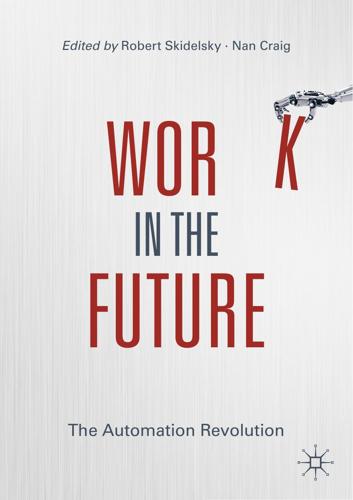
Work in the Future The Automation Revolution-Palgrave MacMillan (2019)
by
Robert Skidelsky Nan Craig
Published 15 Mar 2020
And as companies with extensive data extraction are the most likely to benefit from the virtuous cycle, it means a further consolidation of power, data and resources in the hands of the few companies that already dominate the platform economy. This is all the more important because AI is a general purpose technology.10 AI’s impact will be felt across the economy—so those who control AI, who can actually do AI, are going to have major power and influence in the economy. For instance, for economic impacts we might think about Amazon Web Services or Google Cloud building up AI that they can rent out to other businesses that are too data-poor to build their own AI.
…
Retrieved from http://social.techcrunch.com/2015/03/03/ in-the-age-of-disintermediation-the-battle-is-all-for-the-customer-interface/ Jourdan, A., & Ruwitch, J. (2016, February 18). Uber Losing $1 Billion a Year to Compete in China. Reuters. Retrieved from http://www.reuters.com/article/uber-china-idUSKCN0VR1M9 Jovanovic, B., & Rousseau, P. L. (2005). General Purpose Technologies. Working Paper (National Bureau of Economic Research, January 2005). Retrieved from http://www.nber.org/papers/w11093 Kosoff, M. (2017, November 9). Why the ‘Sharing Economy’ Keeps Getting Sued. Vanity Fair. Retrieved from https://www.vanityfair.com/news/2017/11/ postmates-worker-classification-lawsuit Levine, D., & Somerville, H. (2016, May 10).

Capitalism and Its Critics: A History: From the Industrial Revolution to AI
by
John Cassidy
Published 12 May 2025
In their 2014 book The Second Machine Age, Erik Brynjolfsson and Andrew McAfee, two economists at MIT, wrote: “The key building blocks are already in place for digital technologies to be as important and transformational to society and the economy as the steam engine.”17 Modern economists refer to a technology that impacts the entire economy over extended periods as a “general purpose technology.” (The idea goes back at least as far as Kondratiev, although he rarely gets the credit.) Brynjolfsson and McAfee argued that AI could turn out to be the most powerful general purpose technology of all. In response to the question “Is growth over?” they wrote, “Not a chance. It’s just being held back by our inability to process all the new ideas fast enough.”18 In 2020, Nicholas Crafts, the late English economic historian known for his foundational research on the British industrial revolution and his quantification of the productivity gains from Thatcherism, gave a presentation to the Bank of England about “AI as a General Purpose Technology.”19 Industrial revolutions are often associated with particular inventions, such as steam engines and electricity, but they really center on inventing new methods of invention, Crafts said in his talk, which he subsequently turned into a paper.
…
Nicholas Crafts, “AI as a GPT: An Historical Perspective,” March 25, 2020, https://warwick.ac.uk/fac/soc/economics/staff/nfrcrafts/ai_as_a_gpt.ppt.pdf. 20. Nicholas Crafts, “Artificial Intelligence as a General-Purpose Technology: An Historical Perspective,” Oxford Review of Economic Policy 37, no. 3 (Autumn 2021), 521–36, https://academic.oup.com/oxrep/article/37/3/521/6374675. 21. Crafts, “Artificial Intelligence as a General-Purpose Technology,” 521–36. 22. Krystal Hu, “ChatGPT Sets Record for Fastest Growing User Base—Analyst Note,” Reuters, February 2, 2023, https://www.reuters.com/technology/chatgpt-sets-record-fastest-growing-user-base-analyst-note-2023–02–01. 23.
…
It’s just being held back by our inability to process all the new ideas fast enough.”18 In 2020, Nicholas Crafts, the late English economic historian known for his foundational research on the British industrial revolution and his quantification of the productivity gains from Thatcherism, gave a presentation to the Bank of England about “AI as a General Purpose Technology.”19 Industrial revolutions are often associated with particular inventions, such as steam engines and electricity, but they really center on inventing new methods of invention, Crafts said in his talk, which he subsequently turned into a paper. During the first industrial revolution, he explained, the new methodology involved “systematic empiricism and experimentation,” relying on basic mechanical principles.20 In the second industrial revolution, during the late nineteenth century, many firms created product development laboratories that applied scientific research to the creation of marketable items.

Architects of Intelligence
by
Martin Ford
Published 16 Nov 2018
Major media organizations increasingly rely on automated journalism to turn raw data into coherent news stories that are virtually indistinguishable from those written by human journalists. The list goes on and on, and it is becoming evident that AI is poised to become one of the most important forces shaping our world. Unlike more specialized innovations, artificial intelligence is becoming a true general-purpose technology. In other words, it is evolving into a utility—not unlike electricity—that is likely to ultimately scale across every industry, every sector of our economy, and nearly every aspect of science, society and culture. The demonstrated power of artificial intelligence has, in the last few years, led to massive media exposure and commentary.
…
YANN LECUN: I’m not an economist, but I’m obviously interested in those questions, too. I’ve talked to a bunch of economists, and I’ve attended a number of conferences with a whole bunch of very famous economists who were discussing those very questions. First of all, what they say is that AI is what they call a general-purpose technology or GPT for short. What that means is that it’s a piece of technology that will diffuse into all corners of the economy and transform pretty much how we do everything. I’m not saying this; they are saying this. If I was saying this, I would sound self-serving or arrogant, and I would not repeat it unless I had heard it from other people who know what they’re talking about.
…
DEMIS HASSABIS: From the beginning, we were an AGI company, and we were very clear about that. Our mission statement of solving intelligence was there from the beginning. As you can imagine, trying to pitch that to standard venture capitalists was quite hard. Our thesis was that because what we were building was a general-purpose technology, if you could build it powerfully enough, general enough, and capable enough, then there should be hundreds of amazing applications for it. You’d be inundated with incoming possibilities and opportunities, but you would require a large amount of upfront research first from a group of very talented people that we’d need to get together.

The Rise and Fall of American Growth: The U.S. Standard of Living Since the Civil War (The Princeton Economic History of the Western World)
by
Robert J. Gordon
Published 12 Jan 2016
Our account in part I of this book of the great inventions distinguishes between the original invention and the subsidiary subinventions made possible by the initial invention. The two most important inventions of the late nineteenth century were electric light and power and the internal combustion engine, and these are often described as a “General Purpose Technology” (GPT) that can lead to the creation of many subinventions.37 Subinventions made possible by electricity as a GPT are such fundamental drivers of productivity as elevators; electric hand and machine tools; electric streetcars, elevated trains, and underground subways; the whole host of consumer appliances starting with the electric iron and vacuum cleaner and followed by the refrigerator, washing machine, clothes dryer, dishwasher, and many others; and, finally, air conditioning, which arrived in movie theaters in the 1920s, in some office buildings in the 1930s, and in the American home in the 1950s and 1960s.
…
Part of the decline in population growth was, of course, the result of delayed fertility due to the difficult economic circumstances of the Depression years and the absence of men during the war years of 1942–45. 35. For more on overbuilding in the 1920s, see R. A. Gordon (1974). 36. The classic statement of this explanation of reduced inequality during 1940–70 is presented by Goldin and Margo (1992). 37. The phrase “general-purpose technology” was introduced in Bresnahan and Trajtenberg (1995), and the role of subsidiary and complementary inventions is further examined in the introductory chapter of Bresnahan and Gordon (1997). 38. Abbot (1932, pp. 17–18). 39. The authors provide numerous examples of inventions that long preceded the commercial introduction, taking most of their dates from Mensch (1979).
…
“What Retirees Do All Day: Here’s How Retirees Are Using Their Leisure Time,” U.S. News and World Report, July 2, pp. 1–2. Bresnahan, Timothy F., and Gordon, Robert J., eds. (1997). The Economics of New Goods, Studies in Income and Wealth, vol. 58. Chicago, IL: University of Chicago Press for NBER. Bresnahan, Timothy F., and Trajtenberg, Manual. (1995). “General Purpose Technologies: ‘Engines of Growth’?” Journal of Econometrics 65, no. 1 (January): 83–108. Brinkley, Garland L. (1997). “The Decline in Southern Agricultural Output, 1860–1880,” Journal of Economic History 57, no. 1 (March): 116–38. Brody, David. (1960). Steelworkers in America: The Nonunion Era. New York: Harper Torchbooks.
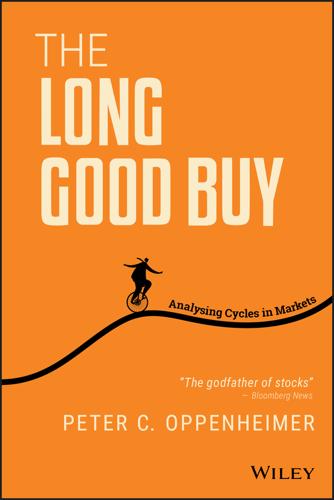
The Long Good Buy: Analysing Cycles in Markets
by
Peter Oppenheimer
Published 3 May 2020
Power from the ground up: Japan's land bubble. The Harvard Business Review [online]. Available at https://hbr.org/1990/05/power-from-the-ground-up-japans-land-bubble David, P. A., and Wright, G. (2001). General purpose technologies and productivity surges: Historical reflections on the future of the ICT revolution. Economic Challenges of the 21st Century in Historical Perspective, Oxford, UK. Available at https://www.researchgate.net/publication/23742678_General_Purpose_Technologies_and_Productivity_Surges_Historical_Reflections_on_the_Future_of_the_ICT_Revolution Dhaoui, A., Bourouis, S., and Boyacioglu, M. A. (2013). The impact of investor psychology on stock markets: Evidence from France.
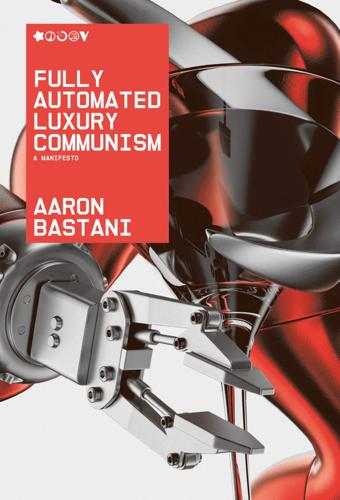
Fully Automated Luxury Communism
by
Aaron Bastani
Published 10 Jun 2019
While there had been an energy revolution in medieval Europe, centred around the vertical windmill, this was unevenly distributed and far from exercising a regional, let alone global, impact. Yet all of that changed over the next 150 years. Increasingly efficient engines powered by fossil fuels untied economic production from organic labour and unreliable forms of renewable energy. The general-purpose technology on which this was based was steam power, the first commercial application of which was Thomas Newcomen’s 1712 atmospheric engine. And yet it wasn’t until the closing decades of the century that capturing the power of steam proved transformational. While the steam engine was not a new creation, an improved version designed by James Watt turned it from a tool of marginal use to the focal point of what became the Industrial Revolution.
…
Information Unbound: The Third Disruption This tendency to perpetually innovate as a result of competition, to constantly supplant work performed by humans and maximise productivity, would ultimately lead to a Third Disruption, one whose fullest conclusions are no less dizzying than the two which preceded it. This Third Disruption has already started, with evidence of its arrival all around us. As with the Second Disruption its basis is a general-purpose technology: the modern transistor and integrated circuit, contemporary analogues to Watt’s steam engine over two centuries ago. While the Second Disruption was marked by a relative freedom from scarcity in motive power – coal and oil rather than muscle and wind moving wheels, pulleys, ships, people and goods – the defining feature of the Third Disruption is ever-greater abundance in information.

Four Battlegrounds
by
Paul Scharre
Published 18 Jan 2023
The world is just beginning to grapple with the implications of a technology that could herald another industrial revolution. AI is not a discrete technology, like railroads or airplanes. It is a general-purpose enabling technology, like electricity, computers, or the internal combustion engine, with many applications. Those earlier general-purpose technologies brought sweeping economic, social, and political changes. Likewise, the scale of potential change from artificial intelligence is staggering. By one estimate, nearly half of all tasks currently being done in the U.S. economy could be outsourced to automation using existing technology. Wired magazine cofounder Kevin Kelly has argued that “[AI] will enliven inert objects, much as electricity did more than a century ago.
…
Nuclear weapons have awesome destructive power, but translating that power into political outcomes is hardly straightforward. Threats to use nuclear weapons are rarely seen as credible except in the most extreme cases. AI is in many ways the opposite of nuclear technology. AI technology is widely available, proliferates rapidly, and has a multitude of uses. Many experts have suggested that AI, like earlier general-purpose technologies, could cause changes on the scale of another industrial revolution. The first and second industrial revolutions saw nations rise and fall on the world stage based on how rapidly and effectively they adopted industrial technology. By the time the second industrial revolution ended in the early twentieth century, the world order and even the key building blocks of national power had been transformed.
…
While the moon was a clear physical destination, a visible landmark in the sky for all to see, the space race had no true destination. It was a competition to stay ahead in an emerging technology, with implications for economic and military power. The unfolding geopolitical competition in AI is similar. Despite loose talk by both defense leaders and AI researchers about an “AI arms race,” AI is not a weapon. It is a general-purpose technology much like electricity. There will no doubt be military applications of AI, but the bigger national advantage is likely to be found in adopting AI across society overall by increasing efficiencies, health care outcomes, economic growth, and other indicators of national well-being. Additionally, by increasing productivity, technological advancements have a compounding effect on economic growth and, by extension, national power.

Restarting the Future: How to Fix the Intangible Economy
by
Jonathan Haskel
and
Stian Westlake
Published 4 Apr 2022
Richard Nelson made this point forcefully in 1994, when he pointed out that new technologies often have their own institutional requirements.36 For example, the deployment of radio relied on institutions to regulate spectrum and content; the rise of the motorcar depended on institutions that governed everything from road safety to fuel supply to land use; the commercialisation of electricity was based on institutions ranging from how electricians were trained and exchanged knowledge to technical standards for the production and transmission of electrical power. This old idea has been given a new lease on life in tech-policy debates that focus on the concept of tech-governance fit, the idea that certain forms of government are particularly well suited to certain general-purpose technologies. Looking at institutions at the wrong granularity can lead to mistaken diagnoses about what is wrong in an economy. As Elinor Ostrom observed, “The institutional analyst faces a major challenge in identifying the appropriate level of analysis relevant to addressing a particular puzzle.”37 This warning suggests that we should be open to the possibility that when the mode of production in the economy changes, its institutional needs do too.
…
DP15207. https://cepr.org/active/publications/discussion_papers/dp.php?dpno=15207. Brynjolfsson, Erik, and Andrew McAfee. 2014. The Second Machine Age. New York: W. W. Norton. Brynjolfsson, Erik, Daniel Rock, and Chad Syverson. 2021. “The Productivity J-Curve: How Intangibles Complement General Purpose Technologies.” American Economic Journal: Macroeconomics 13 (1): 333–72. Building Better, Building Beautiful Commission. 2020. Living with Beauty: Promoting Health, Well Being and Sustainable Growth. January. https://assets.publishing.service.gov.uk/government/uploads/system/uploads/attachment_data/file/861832/Living_with_beauty_BBBBC_report.pdf.
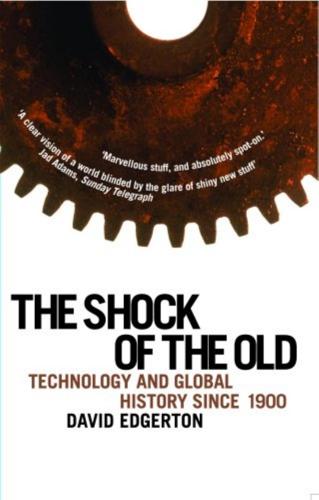
The Shock of the Old: Technology and Global History Since 1900
by
David Edgerton
Published 7 Dec 2006
For others a third industrial revolution, of which the ‘warning signs’ appeared in the 1940s, was based on nuclear energy and electronically controlled automation.5 In the Soviet Union the idea of a ‘Scientific–Technical Revolution’, centred on automation, became Communist party doctrine from the mid-1960s.6 More recently, analysts have tended to highlight what they see as a radical transition from an industrial society to a post-industrial, or information, society brought about through the actions of the digital computer and the internet. In this context, some economists have developed the idea that economic history has been shaped by a very few ‘general-purpose technologies’. The central ones are successively steam power, electricity and now information and communication technologies (ICT). How seriously should we take these claims for these technologies, and for their significance in these particular periods? The answer is that such accounts, for all that they reflect what we think we know, are not as well founded as might be supposed.
…
The answer is that such accounts, for all that they reflect what we think we know, are not as well founded as might be supposed. They are clearly innovation-centric in their chronology, implying that the impact of the technologies comes with innovation and early use. That is not the only problem. What is the basis for the choice of the general-purpose technologies, and how solidly does it rest? Why the steam engine, for example? Why not the heat engine, ranging from the reciprocating steam engine to petrol and diesel engines, to the gas and steam turbines? Similarly, what does electricity mean? It clearly includes lighting and traction, and perhaps industrial uses.

The Sharing Economy: The End of Employment and the Rise of Crowd-Based Capitalism
by
Arun Sundararajan
Published 12 May 2016
In 2007, my colleague Vasant Dhar and I published a research article for our academic peers in which we attempted to explain what fundamental forces had been shaping the evolution of the digital economy, what consequences these forces might have, and what this told us about the anticipated business and societal implications of information technologies.5 At their core, we argued, what distinguished digital technologies from the other past revolutionary general-purpose technologies were three invariant factors that, over four decades, had defined the evolution of the technology and explained a wide variety of its consequences; these forces serve as foundations for thinking about what to expect from digital technologies in the future, and also explain some of the more visible digital determinants of the sharing economy. Three Fundamental Forces Let’s begin with these three fundamental forces that distinguish digital technologies from the other economy-shaping “general purpose” technologies that preceded them. The first is the rendering of things as information and, in particular, representing that information digitally.
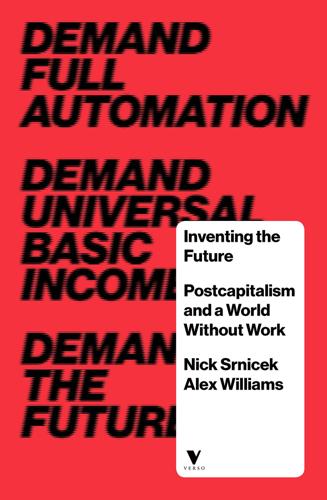
Inventing the Future: Postcapitalism and a World Without Work
by
Nick Srnicek
and
Alex Williams
Published 1 Oct 2015
Carl Benedikt Frey and Michael Osborne, Technology at Work: The Future of Innovation and Employment (Citi – Global Perspectives and Solutions, 2015), pp. 25–6, pdf available at ir.citi.com. 22.Wassily Leontief, ‘National Perspectives: The Definition of Problems and Opportunities’, in The Long-Term Impact of Technology on Employment and Unemployment, a National Academy of Engineering symposium (1983). 23.There is some evidence for this currently happening, with businesses reporting difficulties in finding skilled workers and rising wage disparities within occupations between the most and least skilled. Bessen, ‘Toil and Technology’, p. 19. 24.Boyan Jovanovic and Peter L. Rousseau, General Purpose Technologies, Working Paper, National Bureau of Economic Research, January 2005, at nber.org; George Terbough, The Automation Hysteria: An Appraisal of the Alarmist View of the Technological Revolution (New York: W. W. Norton, 1966), pp. 54–5; Aaron Benanav and Endnotes, ‘Misery and Debt’, in Endnotes 2: Misery and the Value Form (London: Endnotes, 2010), p. 31. 25.Barry Eichengreen, Secular Stagnation: The Long View (Working Paper, National Bureau of Economic Research, January 2015), p. 5, pdf available at nber.org. 26.Kalyan Sanyal, Rethinking Capitalist Development: Primitive Accumulation, Governmentality and Post-Colonial Capitalism (New Delhi: Routledge India, 2013), p. 55.
…
ILO, World Employment and Social Outlook: The Changing Nature of Jobs (Geneva: International Labour Organization, 2015), pp. 19, 23. 40.Bank of International Settlements, Annual Report, 2013/2014 (Basel: Bank for International Settlements, 2014), at bis.org, pp. 58–60; Robert Gordon, ‘US Productivity Growth: The Slowdown Has Returned After a Temporary Revival’, International Productivity Monitor 25 (2013); David Autor, ‘Roundtable: The Future of Jobs’, presented at the The Future of Work in the Age of the Machine, Hamilton Project, Washington, DC, 19 February 2015, at hamiltonproject.org. 41.Susantu Basu and John Fernald, Information and Communications Technology as a General-Purpose Technology: Evidence from U.S. Industry Data (San Francisco: Federal Reserve Bank of San Francisco Working Paper, 2006), p. 17, pdf available at frbsf.org. 42.However, emerging research suggests industrial robots have already contributed around 16 per cent of recent labour productivity growth. Georg Graetz and Guy Michaels, Robots at Work (London: Centre for Economic Performance, 2015), p. 21, pdf available at events.crei.cat. 43.Frey and Osborne, Technology at Work, p. 40. 44.Frey and Osborne, Future of Employment, p. 38; Stuart Elliott, ‘Anticipating a Luddite Revival’, Issues in Science and Technology 30: 3 (2014), at issues.org. 45.The standard Marxist response to full automation is to point to its ‘objective’ limits by arguing that capitalism will never eliminate its source of surplus value (i.e. labour).
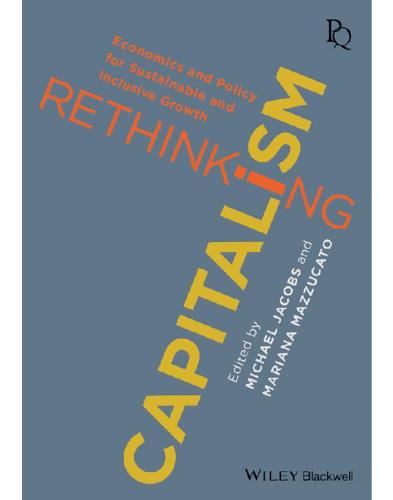
Rethinking Capitalism: Economics and Policy for Sustainable and Inclusive Growth
by
Michael Jacobs
and
Mariana Mazzucato
Published 31 Jul 2016
But our current information era is only halfway through its diffusion path. If history is a guide, it has twenty to thirty years of deployment ahead. We have indeed witnessed a rash of new products and increasingly changing consumption patterns over the past two decades due to the widespread installation of these ‘general purpose’ technologies, yet their capacity to transform every single industry and activity is only in its early stages. There is a huge potential for innovation that is technologically feasible but still risky and uncertain in terms of markets and profitability. What is lacking is a direction that responds appropriately to the current contextual conditions and the specific wide-ranging innovation potential now installed.
…
From a technological point of view, such product categories do not constitute a synergistic system, just as automobiles and plastics alone would not have been enough in the last technological revolution: they do not lead to sufficient technical convergence in equipment, engineering, skills or suppliers.24 Rather, ‘green’ is one of the possible directions of stimulus for deployment of the general purpose technologies of ICT across every industry and sector in which challenges brought by globalisation and environmental degradation turn from obstacles to solutions. Thus, green growth should be seen as a ‘mission-oriented’ pathway to promote a major switch in production patterns and lifestyles, creating new sources of employment and well-being.

AI 2041: Ten Visions for Our Future
by
Kai-Fu Lee
and
Qiufan Chen
Published 13 Sep 2021
First, I’ll describe quantum computing, which I believe has an 80-percent chance of working by 2041. And if that happens, it may have a greater impact on humanity than AI. It is truly general-purpose technology (like the steam engine, electricity, computing, and AI) that can help us dramatically improve science and understand nature. Quantum computing promises immense beneficial impact to humanity, as all general-purpose technologies have offered in the past. Quantum computers will be a great accelerator of AI, and quantum computing has the potential to revolutionize machine learning and solve problems that were once viewed as impossible.
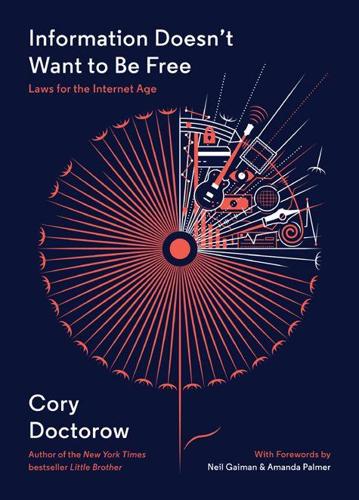
Information Doesn't Want to Be Free: Laws for the Internet Age
by
Cory Doctorow
,
Amanda Palmer
and
Neil Gaiman
Published 18 Nov 2014
Why make a special-purpose chip that can only tell the time or play an MP3, when there’s an off-the-shelf alternative that can do all that and more, available at a fraction of the cost? I love my digital appliances—my mobile phone, my bedside clock, the router that runs my home broadband, the waterproof music player I use when I swim. But the availability of general-purpose technology has tempted some companies into digital-lock territory, and that’s where it starts to go sour. Take home broadband routers. Many companies would like to offer different models of the same router, with varying features—the basic model that does just WiFi, a more deluxe version that can also serve as a voice-over-IP telephone, and a top-of-the-range version that can do the kind of sophisticated routing tricks used by major corporations and universities to manage enormous, complex networks.

Profiting Without Producing: How Finance Exploits Us All
by
Costas Lapavitsas
Published 14 Aug 2013
There is an evident overlap with the parallel, and even earlier, debate on the impact of new technology on productivity growth, summed up below; see, for instance, Paul A. David, ‘The Dynamo and the Computer’, American Economic Review 80:2, 1990; Timothy Bresnahan and Manuel Trajtenberg, ‘General Purpose Technologies: “Engines of Growth?” ’, NBER Working Paper No. 4148, 1992; and Roy Radner, ‘The Organization of Decentralized Information Processing’, Econometrica 61:5, 1993. 8 Within the Marxist tradition, labour process theory – going back at least to Harry Braverman (Labor and Monopoly Capital, New York: Monthly Review Press, 1974) – has examined the balance between labour and capital at the workplace to establish changing patterns of exploitation and loss of skill for labour.
…
Brenner, Robert, ‘What Is Good for Goldman Sachs: The Origins of the Current Crisis’, new introduction to 2009 edition of Brenner, The Economics of Global Turbulance, London: Verso. Brenner, Robert, and Mark Glick, ‘The Regulation Approach: Theory and History’, New Left Review 188, 1991, pp. 45–119. Bresnahan, Timothy, and Manuel Trajtenberg, ‘General Purpose Technologies: “Engines of Growth?” ’, NBER Working Paper No. 4148, National Bureau of Economic Research, 1992. Bresnahan, Timothy, Erik Brynjolfsson, and Loren Hitt, ‘Information Technology, Workplace Organization, and the Demand for Skilled Labor: Firm-Level Evidence’, Quarterly Journal of Economics 117:1, 2002, pp. 339–76.

More: The 10,000-Year Rise of the World Economy
by
Philip Coggan
Published 6 Feb 2020
Between 1902 and 1929, the amount of electricity used in the US rose 16-fold while the nominal price fell 60%.28 Factories were redesigned because of electricity; each machine could have its own power supply rather than rely on an elaborate system of belts and pulleys from a central power unit. Streets became much more brightly lit. Electricity was a “general purpose technology” in that it made many new devices and activities possible. Our houses became full of gadgets, both labour-saving (washing machines and irons) and entertaining (record players and TVs). Skyscrapers became possible as electric-powered lifts allowed people to get to the highest floors. One of the great stories of the first half of the 20th century was the electrification of large parts of the developed world.
…
Apple allowed other companies to create applications to use on the iPhone. The more apps that were created, the more appealing an iPhone became for consumers. And as the number of iPhone users grew, the greater the incentive to create new apps. Chips with everything Some innovations are “general purpose technologies” that can be adapted to a wide range of uses: steam engines, the internal combustion exchange and electric power are three examples. In the modern era, the most striking example has been the computer. The computer’s origins can be traced back to Charles Babbage, one of a great tradition of Victorian gentleman inventors.

Capitalism in America: A History
by
Adrian Wooldridge
and
Alan Greenspan
Published 15 Oct 2018
Occasional oil shocks such as the one in the 1970s represented a fundamental threat to America’s way of life and promoted lots of talk about kicking the oil habit. As soon as the oil price declined, Americans returned to their earlier habits. The 1880s saw the introduction of two revolutionary new technologies, electric power and the internal combustion engine. Economists call these “general purpose technologies” because they are great inventions in their own right that lead inexorably to lots of smaller inventions that, taken together, completely change the tenor of life. Electricity was such a powerful new technology that contemporaries regarded it as a variety of magic. It can be generated easily and transmitted long distances with minimal leakage, and without smoke or fumes.
…
Michael Faraday, also an Englishman, produced the first electric generator, a copper disk that rotated between the poles of a horseshoe magnet, in 1831. A German, Karl Benz, developed the first internal combustion engine on New Year’s Eve, 1879, a mere ten weeks after Edison unveiled his electric light, and produced the first motorcar six years later, in 1885. But America can certainly claim to have democratized these general-purpose technologies more successfully than any other country. America’s genius lay in three things that are rather more subtle than invention: making innovations more user friendly; producing companies that can commercialize these innovations; and developing techniques for running these companies successfully.
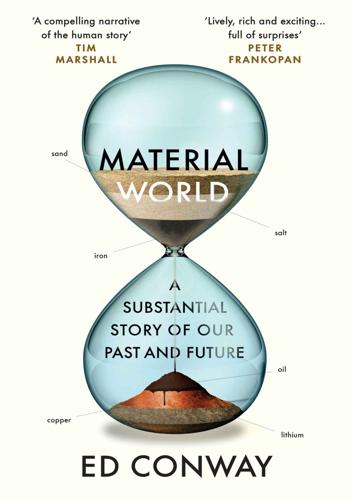
Material World: A Substantial Story of Our Past and Future
by
Ed Conway
Published 15 Jun 2023
A few years ago two historians, Alan Macfarlane and Gerry Martin, went methodically through 20 of the great experiments that advanced human knowledge – everything from Robert Boyle and Robert Hooke’s creation of a vacuum chamber to Isaac Newton’s theory of light to Michael Faraday’s investigations into electricity – and discovered that all but four of them relied in some way on glass prisms or containers or contraptions.4 Glass, in other words, was a foundational innovation, a general purpose technology like the wheel or the steam engine or the silicon chip. This magical product was important not just for what it was but for what it enabled us to do – to make further leaps of imagination and feats of invention. Indeed, it continues to play that role even today. The internet is mostly a mesh of information transmitted through glass wires and, as you’ll see later on in this section, without glass we would be unable to make the brains of the most advanced computers.
…
In 1850, with cast iron tools, the same job took just under three minutes. By 1900, with steel tools, it was less than 30 seconds per kilogram.5 Agriculture, of course, is only the beginning of it. But visualise the same kinds of advances happening across every sector and you start to see how much steel matters. And like all ‘general purpose technologies’ – such as glass, the steam turbine or the computer chip – steel was useful not just for what we could build out of it but for what it enabled us to build. This cheap, strong, reliable metal fast became ubiquitous. Once you account for rusting, recycling and waste, there is about 32 billion tonnes of steel out there in the world.

Content: Selected Essays on Technology, Creativity, Copyright, and the Future of the Future
by
Cory Doctorow
Published 15 Sep 2008
Think of the global freak-out caused by the relatively trivial advent of peer-to-peer file-sharing tools: Universities are wiretapping their campuses and disciplining computer science students for writing legitimate, general purpose software; grandmothers and twelve-year-olds are losing their life savings; privacy and due process have sailed out the window without so much as a by-your-leave. Even P2P's worst enemies admit that this is a general-purpose technology with good and bad uses, but when new tech comes along it often engenders a response that countenances punishing an infinite number of innocent people to get at the guilty. What's going to happen when the new technology paradigm isn't song-swapping, but transcendent super-intelligence? Will the reactionary forces be justified in razing the whole ecosystem to eliminate a few parasites who are doing negative things with the new tools?

The Age of AI: And Our Human Future
by
Henry A Kissinger
,
Eric Schmidt
and
Daniel Huttenlocher
Published 2 Nov 2021
The Age of AI is a testament to the fact that we must harness the power of AI to benefit society, not threaten it. A must read for anyone who is interested in the question of how we can leverage AI responsibly to create a better world.” —Michèle Flournoy, Co-Founder and Managing Partner, WestExec Advisors “The increasing power of artificial intelligence, a general purpose technology that can be put to an astonishing array of civil and military uses—from reading X-rays and predicting weather patterns to empowering killer robots and spreading disinformation—is already scrambling centuries-old conceptions of national security and state sovereignty. Equally unnerving, the authors of The Age of AI contend, is that AI will also test the outer limits of human reason and understanding and challenge the very nature of human identity and agency… The three authors have strong claims to be taken seriously… To explain the likely impact of AI in the future, the authors examine our technological past… The most interesting chapter, on security and world order… should be read by anyone trying to make sense of geopolitics today.”

Superintelligence: Paths, Dangers, Strategies
by
Nick Bostrom
Published 3 Jun 2014
Likewise, it is conceivable that a specialized engineering AI could be built that has the technology research superpower while completely lacking skills in other areas. This is more plausible if there exists some particular technological domain such that virtuosity within that domain would be sufficient for the generation of an overwhelmingly superior general-purpose technology. For instance, one could imagine a specialized AI adept at simulating molecular systems and at inventing nanomolecular designs that realize a wide range of important capabilities (such as computers or weapons systems with futuristic performance characteristics) described by the user only at a fairly high level of abstraction.7 Such an AI might also be able to produce a detailed blueprint for how to bootstrap from existing technology (such as biotechnology and protein engineering) to the constructor capabilities needed for high-throughput atomically precise manufacturing that would allow inexpensive fabrication of a much wider range of nanomechanical structures.8 However, it might turn out to be the case that an engineering AI could not truly possess the technological research superpower without also possessing advanced skills in areas outside of technology—a wide range of intellectual faculties might be needed to understand how to interpret user requests, how to model a design’s behavior in real-world applications, how to deal with unanticipated bugs and malfunctions, how to procure the materials and inputs needed for construction, and so forth.9 Table 8 Superpowers: some strategically relevant tasks and corresponding skill sets Task Skill set Strategic relevance Intelligence amplification AI programming, cognitive enhancement research, social epistemology development, etc
…
For instance, if the first wave of machine superintelligence is emulation-based, then a second surge might result when the emulations now doing the research succeed in developing effective self-improving artificial intelligence.35 (Alternatively, a second transition might be triggered by a breakthrough in nanotechnology or some other military or general-purpose technology as yet unenvisaged.) The pace of development after the initial transition would be extremely rapid. Even a short gap between the leading power and its closest competitor could therefore plausibly result in a decisive strategic advantage for the leading power during a second transition.

Slouching Towards Utopia: An Economic History of the Twentieth Century
by
J. Bradford Delong
Published 6 Apr 2020
My late teacher David Landes’s The Unbound Prometheus accomplished this task for Europe from 1750 to 1965, and it remains a classic. And Robert Gordon has written a new classic covering the United States since 1870 in the same vein.4 But right here and now it is, I think, appropriate to bring some features of these technologies to center stage. Consider the idea of General Purpose Technologies (GPTs): those technologies where advances change, if not everything, nearly everything, as they ramify across sector upon sector.5 Steam power in the early 1800s was the first. Early machine tools—embodying in their design and construction so much technological knowledge about how to shape materials—in the mid-1800s were the second.
…
Landes, The Unbound Prometheus: Technological Change and Industrial Development in Western Europe from 1750 to the Present, Cambridge, UK: Cambridge University Press, 1969; Robert S. Gordon, The Rise and Fall of American Growth: The U.S Standard of Living since the Civil War, Princeton, NJ: Princeton University Press, 2016. 5. Elhanan Helpman, General Purpose Technologies and Economic Growth, Cambridge, MA: MIT Press, 1998. 6. Paul E. Ceruzzi, Computing: A Concise History, Cambridge, MA: MIT Press, 2012. 7. Gordon Moore, “Cramming More Components onto Integrated Circuits,” Electronics 38, no. 8 (April 1965), available at Intel, https://newsroom.intel.com/wp-content/uploads/sites/11/2018/05/moores-law-electronics.pdf. 8.

The Journey of Humanity: The Origins of Wealth and Inequality
by
Oded Galor
Published 22 Mar 2022
Roebroeks, Wil, and Paola Villa, ‘On the earliest evidence for habitual use of fire in Europe’, Proceedings of the National Academy of Sciences 108, no. 13 (2011): 5209–14. Romer, Paul M., ‘Endogenous Technological Change’, Journal of Political Economy 98, no. 5, Part 2 (1990): S71–102. Rosenberg, N., and M. Trajtenberg, ‘A General-Purpose Technology at Work: The Corliss Steam Engine in the Late-Nineteenth-Century United States’, The Journal of Economic History 64, no. 1 (2004): 61–99. Roser, Max, Hannah Ritchie and Esteban Ortiz-Ospina, ‘Life Expectancy’, Our World in Data (2019). Roser, Max, Hannah Ritchie and Esteban Ortiz-Ospina, ‘World Population Growth’, Our World in Data (2019).
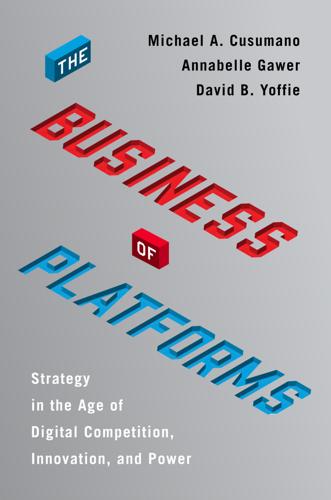
The Business of Platforms: Strategy in the Age of Digital Competition, Innovation, and Power
by
Michael A. Cusumano
,
Annabelle Gawer
and
David B. Yoffie
Published 6 May 2019
IBM was trying to turn its Watson AI technology into a new consulting service as well as an innovation platform by building partnerships with application developers at companies and universities, especially for health care applications.40 General Electric opened up its Predix operating system to other firms, encouraging them to build products and services for the Internet of things.41 (We explore this case in Chapter 5.) We also have some open general-purpose technologies emerging as potentially new innovation platforms. Blockchain is a good example. This was once associated with Bitcoin, the cryptocurrency (also a kind of transaction platform technology). Various firms were starting to use blockchain software to track different types of transactions over the Internet, including shipments of food as well as transfers of money and confidential documents.42 Third, managers and entrepreneurs in many more industries probably need to give serious thought to combining innovation and transaction functions—adopting a hybrid strategy.
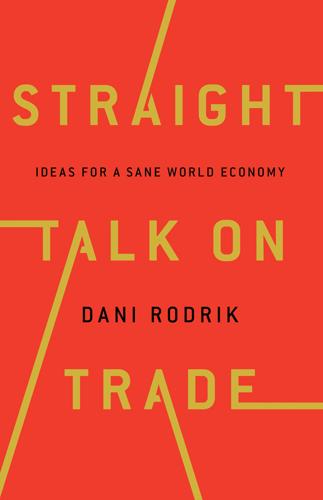
Straight Talk on Trade: Ideas for a Sane World Economy
by
Dani Rodrik
Published 8 Oct 2017
Economists recognize the importance of technological innovation and have made it the centerpiece of their models of long-term growth. In political-economy models, by contrast, the working assumption is that there is no room for discovery. Many political innovations are likely to remain ephemeral, inconsequential, or soon forgotten. But some, as with general-purpose technology, may prove substantial and durable. Think of political parties, independence of judiciary, or indeed democracy. Technological change need not make everyone better off. Similarly, policy innovation could leave the nonelites worse off. Some ideas could be bad from the standpoint of society at large and yet gain currency: imagine elites successfully persuading nonelites that they should work harder in this life so they can have redemption in the next, or (closer to home) that an extremely low rate of capital taxation actually benefits them.

Net Zero: How We Stop Causing Climate Change
by
Dieter Helm
Published 2 Sep 2020
Although there are some very promising lines of research, it is in the nature of technological change that it will surprise. The coming of modern communications technology has been a surprise in my lifetime, and a transformational one which is yet to fully play itself out. As with other major general-purpose technologies, it is not only a revolution in itself, but also revolutionises everything it comes into contact with, often over many decades. Electricity was like that, as was the internal combustion engine. Both took a century to have their full impacts. Digitalisation is likely to be the same. Surprises should not stop us channelling R&D funding into those areas which look promising.
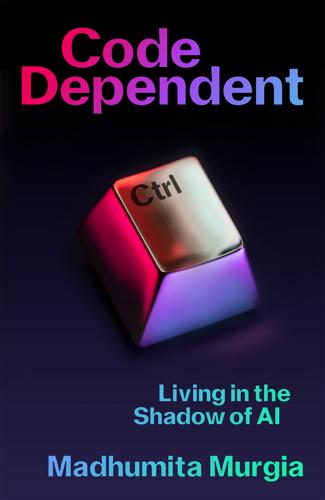
Code Dependent: Living in the Shadow of AI
by
Madhumita Murgia
Published 20 Mar 2024
Over the past three years, Paolo had become the AI whisperer to the highest echelon of the Holy See. The friar, who completed part of his PhD in the ethics of human enhancement technologies at Georgetown University in the US, briefs the eighty-five-year-old Pope and his senior counsellors on the potential applications of AI, which he describes as a general-purpose technology ‘like steel or electrical power’, and how it will change the way in which we all live. He also plays the role of matchmaker between what Stephen Jay Gould famously described as the non-overlapping magisteria – leaders of faith on the one hand and technology on the other. Paolo held meetings with IBM’s vice-president John Kelly, Mustafa Suleyman, a former co-founder of Alphabet-owned AI company Google DeepMind, and Norberto Andrade, who heads AI ethics policy at Meta, to facilitate an exchange of ideas on what is considered ‘ethical’ in the design and deployment of the emerging technology.

Shocks, Crises, and False Alarms: How to Assess True Macroeconomic Risk
by
Philipp Carlsson-Szlezak
and
Paul Swartz
Published 8 Jul 2024
In some areas, it will gain traction quickly; in others it will take more time; in others still it will be tripped up by hurdles. On net, the impact will be much smaller than anticipated by a bottom-up sum. Rather than take a bottom-up approach, we prefer to start with a macro lens on what happens when a general-purpose technology gains traction in a persistently tight economy. The ICT boom of the 1990s, when rapid advances in information and communication technology delivered a productivity surge in the United States, is a strong historical case. This episode offers important lessons that are captured in three numbers: 30, 100, and 10, illustrated in figure 8.2.

The End of Ownership: Personal Property in the Digital Economy
by
Aaron Perzanowski
and
Jason Schultz
Published 4 Nov 2016
According to the Court’s decision, “the business of supplying the equipment that makes such copying feasible should not be stifled simply because the equipment is used by some individuals to make unauthorized reproductions.” The Sony decision, while it benefitted device makers most directly, more subtly vindicated the personal property interests of consumers. It protected their right to acquire general-purpose technology, even if it could be used to infringe. It reaffirmed that we can use the devices we own in non-infringing ways despite the objections of copyright holders. And it protected our living rooms from the kind of surveillance and supervision that would be necessary to police the private use of property.

Artificial Whiteness
by
Yarden Katz
These were accompanied by calls for more collaboration between AI practitioners and the social scientists who study them. Such pleas reproduce the problematic fixation on “AI” that benefits corporations and the national security state, even if they desperately try to invert its valence (“AI for social justice” rather than “AI for war”). Since AI isn’t the general-purpose technology experts present it as but a technology of whiteness, the attempted inversion becomes another justification for AI’s expert industry and its initiatives. Such proposals flow from the sociological frame with which academics often approach AI, computing, and the sciences generally. This frame’s attempt to show there are no boundaries remaining—between the social and technical or the natural and cultural—has produced a picture of a world made up of actors, networks, and devices.
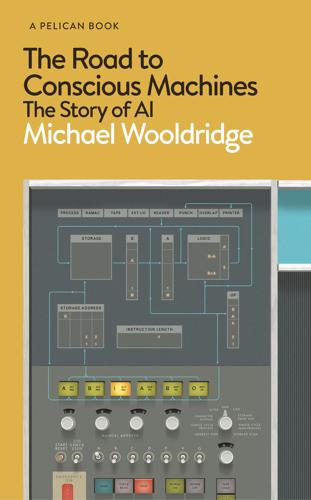
The Road to Conscious Machines
by
Michael Wooldridge
Published 2 Nov 2018
In inverse reinforcement learning, we instead get to see ‘ideal’ behaviour (what a person would do); the challenge is then to figure out what the relevant rewards are for the AI software.20 In short, the idea is to look at human behaviour as our model for desirable behaviour. Chapter 8 How Things Might Actually Go Wrong Although I am a sceptic with respect to the possibility of an imminent Singularity, that doesn’t mean that I believe we have nothing to fear from AI. After all, AI is a general-purpose technology: its applications are limited only by our imagination. All such technologies have unintended consequences, being felt decades or even centuries into the future; and all such technologies have the potential for abuse. Our anonymous prehistoric ancestors who first harnessed fire should surely be forgiven for not anticipating the climactic changes that would result from burning fossil fuels.

Radical Abundance: How a Revolution in Nanotechnology Will Change Civilization
by
K. Eric Drexler
Published 6 May 2013
Relying too much on analogies to past events will suggest familiar but unrealistic consequences while omitting a new, unfamiliar range of potential responses. Once again, the ongoing revolution in information technologies offers analogies. Both the Information Revolution and the APM Revolution bring in their wake unprecedented ranges of capabilities based on a general-purpose technology, and each in its sphere brings a kind of radical abundance. We’ve seen the emergence of a gift economy in digital products such as software, text, images, and video; the natural course of events would see this pattern extend to APM product-design files, leading (aside from the cost of input materials) to a gift economy in physical objects (but within what mandated constraints?).

The Raging 2020s: Companies, Countries, People - and the Fight for Our Future
by
Alec Ross
Published 13 Sep 2021
But the arms control regime of the 20th century largely does not apply to the national security technologies of the 21st century. One of the main reasons is that digital tools like AI are more difficult to categorize than traditional defense technologies. Fighter jets and warships are used for one thing: the projection and exercise of military power. But artificial intelligence is a general-purpose technology with both national security applications and completely benign commercial uses. A computer vision algorithm can be trained to spot enemy combatants on a battlefield, but it can also be used to tag friends in social media posts and power self-driving cars. AI takes on the values and intentions of its human masters.

The AI Economy: Work, Wealth and Welfare in the Robot Age
by
Roger Bootle
Published 4 Sep 2019
Moreover, its impact is likely to be felt right across the economy. Some technological improvements are specific to particular sectors or narrow aspects of production and have only limited impact on the wider scheme of things. But every so often a development occurs that unleashes a technology with general applicability. We call these general-purpose technologies (GPTs). The steam engine was a GPT and AI promises to be one, too. That is why I have thought it appropriate to refer to the decades ahead of us as “the AI economy.” Robots and AI promise to have a major impact on productivity because in some areas they can replace humans altogether and in others they can greatly increase their output per hour or improve the quality and reliability of what they do.
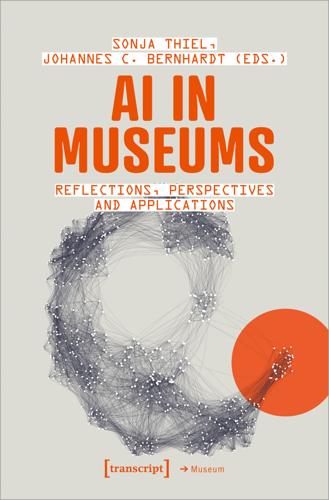
AI in Museums: Reflections, Perspectives and Applications
by
Sonja Thiel
and
Johannes C. Bernhardt
Published 31 Dec 2023
By now, however, computer scientists have found thousands of natural images that machine learning systems constantly get wrong. I think it is important to be aware of this logic or approach to our world, to know where AI is extremely helpful and where it is bound to make mistakes. AI is, unfortunately, a general-purpose technology, and this means that the changes and transformations in each field are different and require their own form of assessment. What worries me most is that the knowledge and infrastructure is mainly in the hands of big corporations and that governments are not doing enough to ensure that public infrastructures keep pace with current developments.
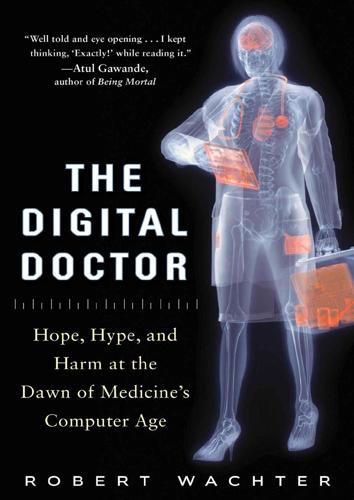
The Digital Doctor: Hope, Hype, and Harm at the Dawn of Medicine’s Computer Age
by
Robert Wachter
Published 7 Apr 2015
As the economist Paul Krugman has observed, while productivity isn’t everything, it is almost everything, because it is what ultimately determines the financial vitality of a business and the living standards of a country. While specific technologies—a new jet engine, say, or a solar panel—can improve productivity, since the Industrial Revolution the technologies associated with the greatest productivity bumps have been so-called general-purpose technologies—technologies that transformed multiple industries and laid the groundwork for many new applications. The best-known examples are the steam engine and electricity, and so it’s fair to say that such technologies don’t come around very often, perhaps every 50 to 100 years. Information technology falls into the same category—in fact, in The Second Machine Age, Erik Brynjolfsson and Andrew McAfee call IT “the most general purpose of all.”
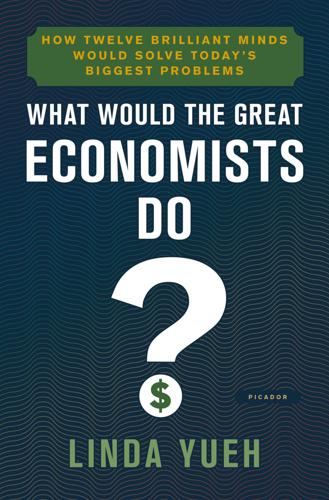
What Would the Great Economists Do?: How Twelve Brilliant Minds Would Solve Today's Biggest Problems
by
Linda Yueh
Published 4 Jun 2018
Solow also revealed: ‘I always thought that the main difference the computer made in my office was that before the computer my secretary used to work for me, and afterward I worked for my secretary.’7 Solow’s scepticism reflects one view that the ICT revolution would not generate as much economy-wide productivity improvement as the earlier Industrial Revolution that introduced general purpose technologies such as the steam engine during Adam Smith’s era, or the Second Industrial Revolution that saw the introduction of railways and electrification during the period lasting from the late nineteenth century until the First World War. Others disagree and expect that productivity will improve once these new ICT and digital technologies become truly embedded into work practices and businesses.
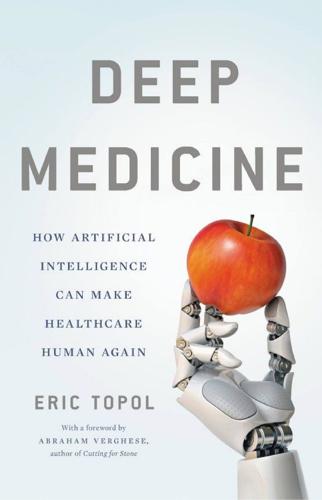
Deep Medicine: How Artificial Intelligence Can Make Healthcare Human Again
by
Eric Topol
Published 1 Jan 2019
The deeper the network, by number of layers, the more complexity it can draw out of the input image. At the top layer, the neurons have now fully differentiated the features and are ready for output—predicting what the chest X-ray shows, based on its training.23 DNNs, with this structural backbone, can functionally be regarded as a general-utility, or a general-purpose, technology, much like the steam engine or electricity.24 And, much like those technologies, these neural networks can be applied to all sorts of problems. Before medicine, these networks were applied principally to four major areas: games, images, voice and speech, and driverless cars. Each has lessons for us as we explore what deep learning can do for medicine.
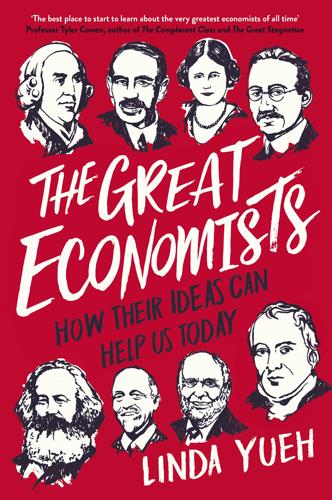
The Great Economists: How Their Ideas Can Help Us Today
by
Linda Yueh
Published 15 Mar 2018
Solow also revealed: ‘I always thought that the main difference the computer made in my office was that before the computer my secretary used to work for me, and afterward I worked for my secretary.’7 Solow’s scepticism reflects one view that the ICT revolution would not generate as much economy-wide productivity improvement as the earlier Industrial Revolution that introduced general purpose technologies such as the steam engine during Adam Smith’s era, or the Second Industrial Revolution that saw the introduction of railways and electrification during the period lasting from the late nineteenth century until the First World War. Others disagree and expect that productivity will improve once these new ICT and digital technologies become truly embedded into work practices and businesses.

New Laws of Robotics: Defending Human Expertise in the Age of AI
by
Frank Pasquale
Published 14 May 2020
FOUR HORSEMEN OF IRRESPONSIBILITY Thanks to long-standing campaigns to limit liability, there will be widespread resistance to such duties. AI also poses new barriers to accountability—and not just in medicine. Futurists envision AIs that effectively act of their own accord, without direction or control by their developers (or any other person). How, the challenge goes, can the creators or owners of such general-purpose technology anticipate all the potential legal problems that their AI might generate or encounter? No one wants to hold Microsoft responsible for ransom notes written as an MS Word document, which is a blank slate. Nor are parents responsible for the crimes of their adult children, who are independent entities.

Machine, Platform, Crowd: Harnessing Our Digital Future
by
Andrew McAfee
and
Erik Brynjolfsson
Published 26 Jun 2017
Kehoe, The Transition to a New Economy after the Second Industrial Revolution, Federal Reserve Bank of Minneapolis Research Department Working Paper 606 (July 2001), http://citeseerx.ist.psu.edu/viewdoc/download?doi=10.1.1.147.7979#x0026;rep=rep1#x0026;type=pdf. 21 “the need for organizational”: Paul A. David and Gavin Wright, General Purpose Technologies and Surges in Productivity: Historical Reflections on the Future of the ICT Revolution, University of Oxford Discussion Papers in Economic and Social History 31 (September 1999), 12, http://sites-final.uclouvain.be/econ/DW/DOCTORALWS2004/bruno/adoption/david%20wright.pdf. 22 more than 300 such trusts: John Moody, The Truth about Trusts: A Description and Analysis of the American Trust Movement (New York: Moody, 1904), 467, https://archive.org/details/truthabouttrust01moodgoog. 22 “ ‘limping’ units”: Shaw Livermore, “The Success of Industrial Mergers,” Quarterly Journal of Economics 50, no. 1 (1935): 68–96. 23 A study by economist Richard Caves: Richard E.
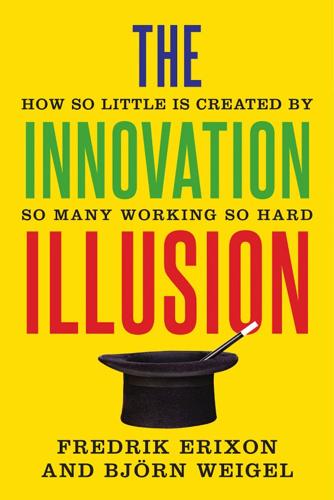
The Innovation Illusion: How So Little Is Created by So Many Working So Hard
by
Fredrik Erixon
and
Bjorn Weigel
Published 3 Oct 2016
ICT) and they may therefore not be fully appreciated when they are hidden in big, aggregate, and economy-wide data that average down the effect of one sector. Figure 8.2 Job creation and destruction rates in the US private sector, 1994–2014 However, that argument fails to convince. The direct contribution by one sector to the economy will always be limited because most sectors are small. More importantly, frontier sectors should represent general-purpose technologies, goods, and services – and their main contribution to the health of the economy should be shown by their indirect contribution to investment, productivity, and growth. Take a company like Facebook. Its main impact on the economy is not that it improves the level of investment and productivity growth in its sector.

Democracy and Prosperity: Reinventing Capitalism Through a Turbulent Century
by
Torben Iversen
and
David Soskice
Published 5 Feb 2019
There have of course been a wide range of technologies through which ICT has operated (and developed) in addition to computing itself: these include biotechnology in the widest sense, and the extraordinary changes across the life sciences, nanotechnology, materials, laser and sensor technology and robotics, as well as the cloud, computer security, mobile communications, and, increasingly, artificial intelligence. And there have been major complementarities between these different technologies. But at the heart of this wider technological—and social and economic—revolution is the semiconductor chip operating as a so-called “general purpose technology” used in transforming most social and economic activities (as electricity had been since the late nineteenth century). In thinking about how skill sets work in the knowledge economy, four factors are of key importance from a political economic perspective: first, “returns” (in the most general sense) to these developments have operated through individuals with their skill sets and their relations to other individuals with their skill sets.

Blockchain Revolution: How the Technology Behind Bitcoin Is Changing Money, Business, and the World
by
Don Tapscott
and
Alex Tapscott
Published 9 May 2016
Blockchain Implications: The World Economic Forum (WEF), a leading networked institution, has been a vocal proponent of blockchain technology. The blockchain was front and center at Davos in January 2016. Jesse McWaters, financial innovation lead at the WEF, believes blockchain technology is a general-purpose technology, like the Internet, which we can use to make markets radically more efficient and improve access to financial services. The WEF predicted that within a decade, we could store 10 percent of global GDP on blockchains.71 As an organization, the WEF has championed and advanced big issues, such as income inequality, climate change, and even remittances.

Make Your Own Job: How the Entrepreneurial Work Ethic Exhausted America
by
Erik Baker
Published 13 Jan 2025
Merkle, Management and Ideology: The Legacy of the International Scientific Management Movement (Berkeley: University of California Press, 1980); Harry Braverman, Labor and Monopoly Capital: The Degradation of Work in the Twentieth Century (New York: Monthly Review Press, 1974). 24Paul A. David and Gavin Wright, “General Purpose Technologies and Surges in Productivity: Historical Reflections on the Future of the ICT Revolution,” University of Oxford Discussion Papers in Economic and Social History, 31, September 1999 7, https://ora.ox.ac.uk/objects/uuid:f7410c97-0cc6-4483-9661-38424a3bbabe. See also Sam H. Schurr , Calvin C.

Programming Android
by
Zigurd Mednieks
,
Laird Dornin
,
G. Blake Meike
and
Masumi Nakamura
Published 15 Jul 2011
Note If it is unclear which JRE you are running, or if you think you have the wrong JRE running on a Debian-derived Linux system, such as Ubuntu, you can use the following command to display the available JREs and select the right one: sudo update-alternatives --config java The Eclipse Integrated Development Environment (IDE) Eclipse is a general-purpose technology platform. It has been applied to a variety of uses in creating IDEs for multiple languages and in creating customized IDEs for many specialized SDKs, as well as to uses outside of software development tools, such as providing a Rich Client Platform (RCP) for Lotus Notes and a few other applications.
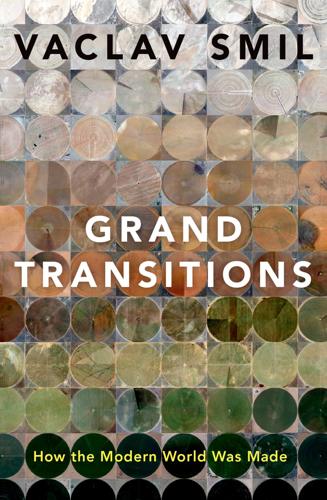
Grand Transitions: How the Modern World Was Made
by
Vaclav Smil
Published 2 Mar 2021
The first Industrial Revolution: Resolving the slow growth/rapid industrialization paradox. Journal of the European Economic Association 3:525–534. Crafts, N. 2010. Explaining the first Industrial Revolution: Two views. European Review of Economic History 15:153–168. Crafts, N. 2014. Steam as a general purpose technology: A growth accounting perspective. The Economic Journal 114:338–351. Creanza, N. et al. 2017. Cultural evolutionary theory: How culture evolves and why it matters. Proceedings of the National Academy of Sciences 114:7782–7789. Crow, J.F. 1998. 90 years ago: The beginning of hybrid maize.

After Apollo?: Richard Nixon and the American Space Program
by
John M. Logsdon
Published 5 Mar 2015
The second act of the drama, discussed in chapters 7–14, involved answering the question, “if not an ambitious post-Apollo program centered on human space flight, then what?” Options evaluated during the 1970–1972 period ranged from focusing the nation’s space capabilities on Earth-bound problems, and perhaps even transforming the space agency to a general-purpose technology organization, to a modestly paced effort using surplus Apollo hardware, to developing a fully or partly reusable space shuttle. During 1970, the future development that had had highest priority in 1969, developing a long duration orbital outpost—a space station launched by the Saturn V Moon rocket and serviced by the space shuttle—fell from favor, and thus other rationales for developing a shuttle had to be articulated.

Growth: From Microorganisms to Megacities
by
Vaclav Smil
Published 23 Sep 2019
GDP: A Brief but Affectionate History. Princeton, NJ: Princeton University Press. Crafts, N. F. R. 1985. British Economic Growth during the Industrial Revolution. Oxford: Clarendon Press. Crafts, N. 1999. Economic growth in the twentieth century. Oxford Review of Economic Policy 15:18–34. Crafts, N. 2004. Steam as a general purpose technology: A growth accounting perspective. Economic Journal 114:338–351. Crafts, N. 2005. The first industrial revolution: Resolving the slow growth/rapid industrialization paradox. Journal of the European Economic Association 3:525–534. Crafts, N. F. R. 2010. Explaining the first Industrial Revolution: Two views.